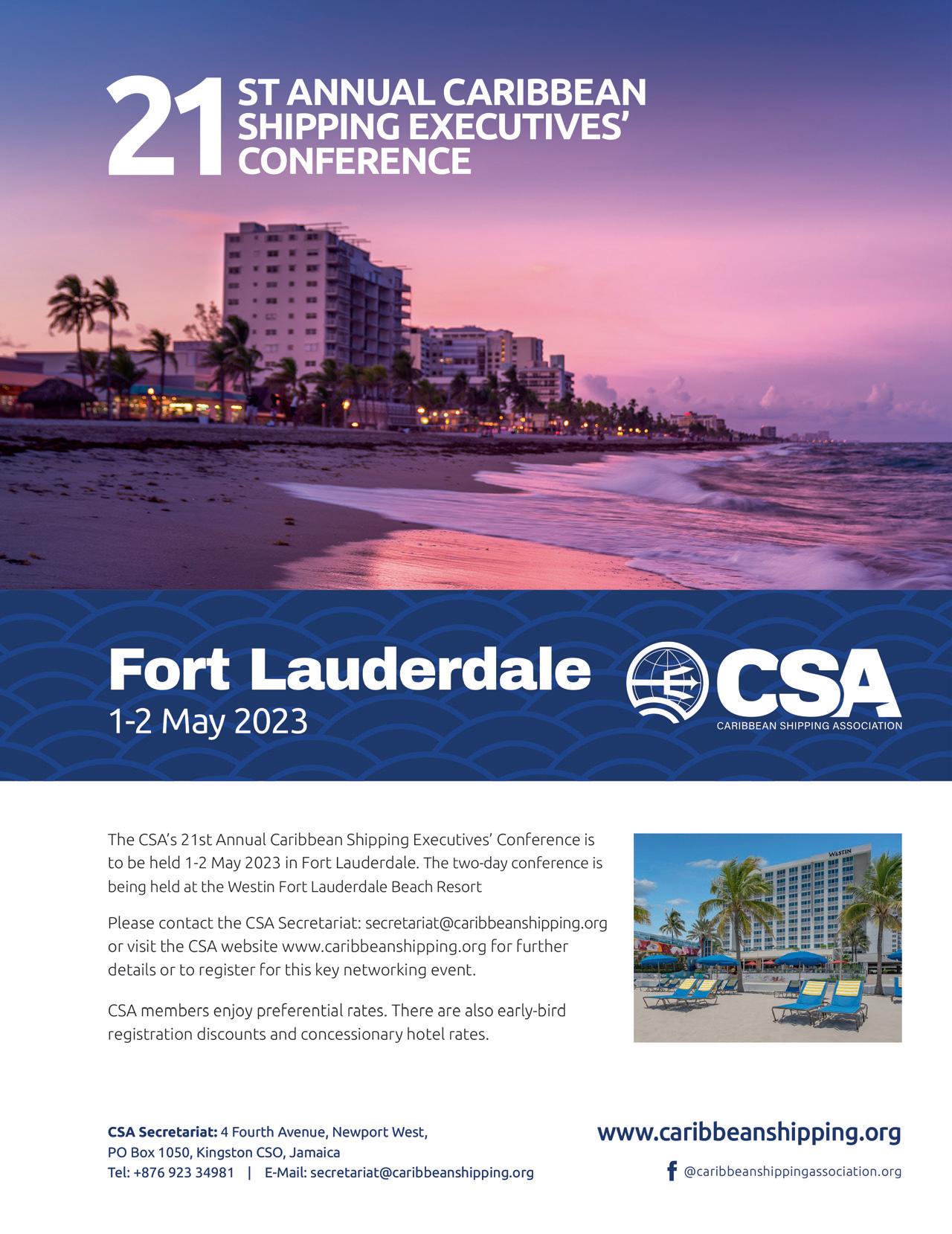Exciting times ahead
Suriname ports and bases taking shape
BRI benefits
China in the Caribbean
Poised for expansion
The Caribbean Maritime University offers more

ISSUE No 48 FEBRUARY - MAY 2023
PROFILE: JONATHAN DANIELS I PORT OF THE YEAR I CARIPORTS I AGM PHOTOS
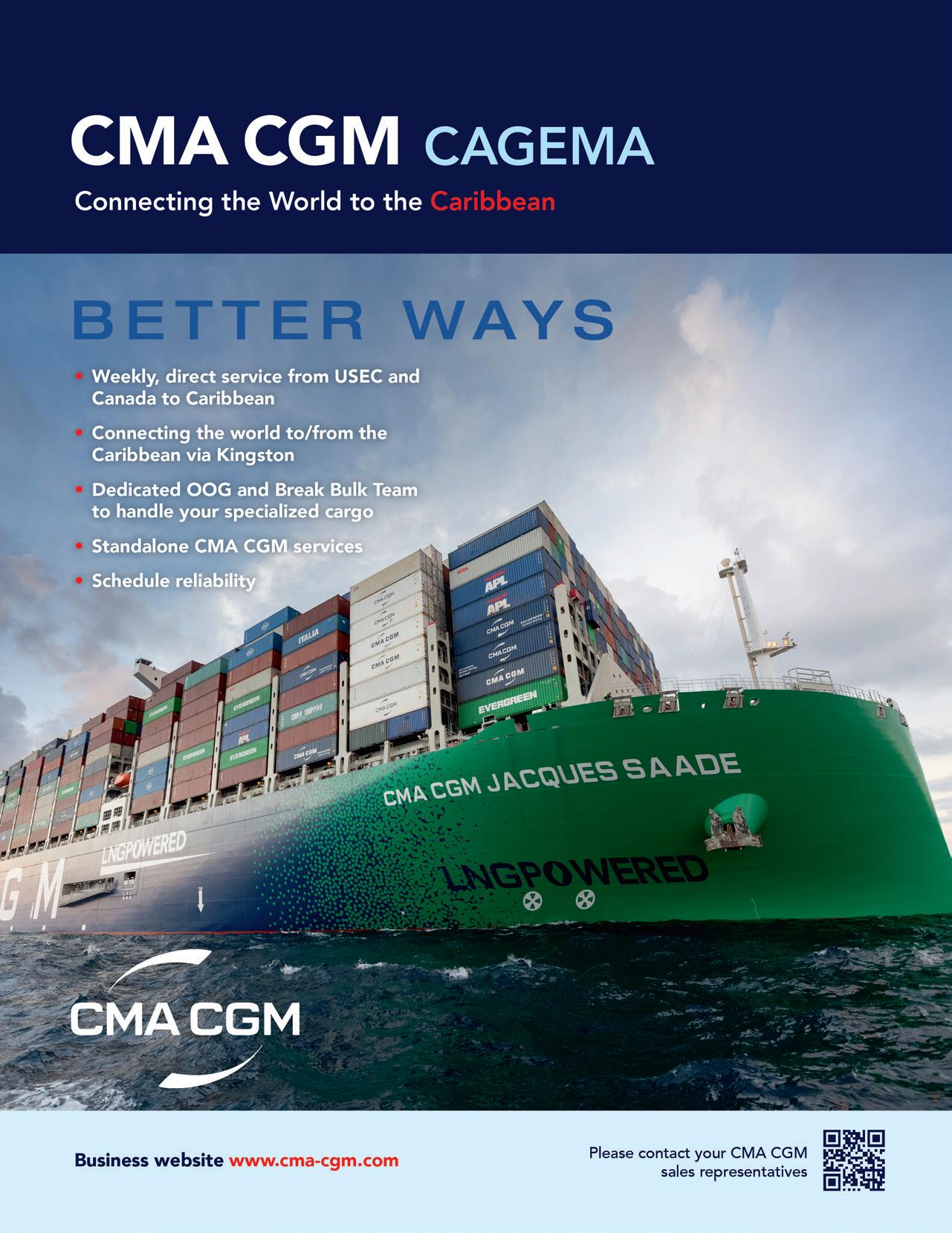
ISSUE
No
MISSION STATEMENT
To promote and foster the highest quality service to the maritime industry through training development; working with all agencies, groups and other associations for the benefit and development of its members and the peoples of the Caribbean region.
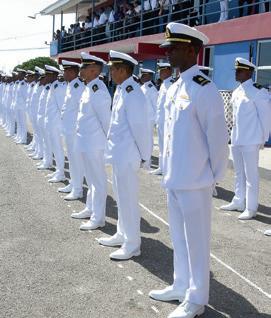
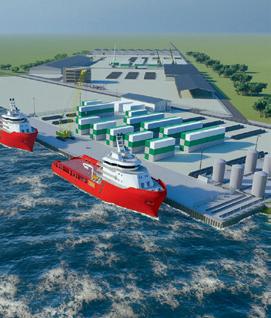
SHIPPING ASSOCIATION COUNCIL 2022-2023
President: Marc Sampson
Immediate Past President: Juan Carlos Croston
Vice President: William Brown
Group A Chairman: Eduardo Pagán
Group A Representative: Nazilia Simone Phillips
Group A Representative: Rhett Chee Ping
Group A Representative: Desmond Sears
Group B Chairman: Mark Williams
Group B Representative: Cristyan Peralta
Group C Chairman: María del Mar Rodríguez
Group C Representative: Robert Bosman
Group D Chairman: JC Barona
Group D Representative: Sabine Bajazet
CSA General Manager: Milaika Capella Ras
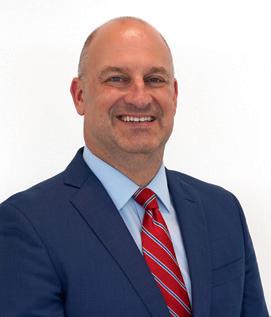
CARIBBEAN SHIPPING ASSOCIATION
4 Fourth Avenue, Newport West
PO Box 1050, Kingston CSO, Jamaica
Tel: +876 923-3491
Fax: +876 757-1592
Email: csa@cwjamaica.com
www.caribbeanshipping.org
ADVERTISING
advertising@caribbean-maritime.com
Tel: +44 (0)1206 752902
PUBLISHER
Land & Marine Publications Ltd
6 The Square, Ipswich, Suffolk
IP5 3SL, United Kingdom
Email: publishing@landmarine.com www.landmarine.com
Views and opinions expressed by writers in this publication are their own and published purely for information and discussion and in the context of freedom of speech. They do not necessarily represent the views and opinions of the Caribbean Shipping Association – The Publisher.

CONTENTS 2 FROM THE CSA PRESIDENT Renewed thrust a success 4 PROFILE: JONATHAN DANIELS How a football coach became a Port Director 9 CHINA IN THE CARIBBEAN The Caribbean’s BRI benefits 12 CARIPORTS CariPorts project looks for regional environmental solutions 14 PORT OF THE YEAR CSA Port of the Year award 2022 16 SURINAME New ports and bases taking shape 20 NICKERIE PORT Nickerie deepwater port gets the green light 23 THE CARIBBEAN MARITIME UNIVERSITY Poised for expansion 27 WIMAC Maritime women shine at CMU’s 2022 Industry Conference 31 CSA'S AGM PHOTOS The 52nd CSA AGM, San Juan, Puerto Rico 36 ROUNDUP The latest news from around the Caribbean CaribbeanMaritimeMagazine cm_magazine @caribbeanmaritimemagazine www.caribbean-maritime.com
THE OFFICIAL JOURNAL OF THE
©2023 Land & Marine Publications Ltd.
48
Caribbean Maritime is delivered to subscribers in biodegradable packaging and the magazine is produced using paper from PEFC certified sources implementing sustainable forestry policies to help preserve our environment. to May 2023 4 16 23 1 www.caribbean-maritime.com
February
Renewed thrust a success
Without question, 2022 was yet another difficult year for the global shipping and logistics industry as it attempted to navigate the impacts of the coronavirus pandemic and its ensuing effects. Freight rate volatility, port bottlenecks and the container shortage were just some of the issues that tested our capabilities.

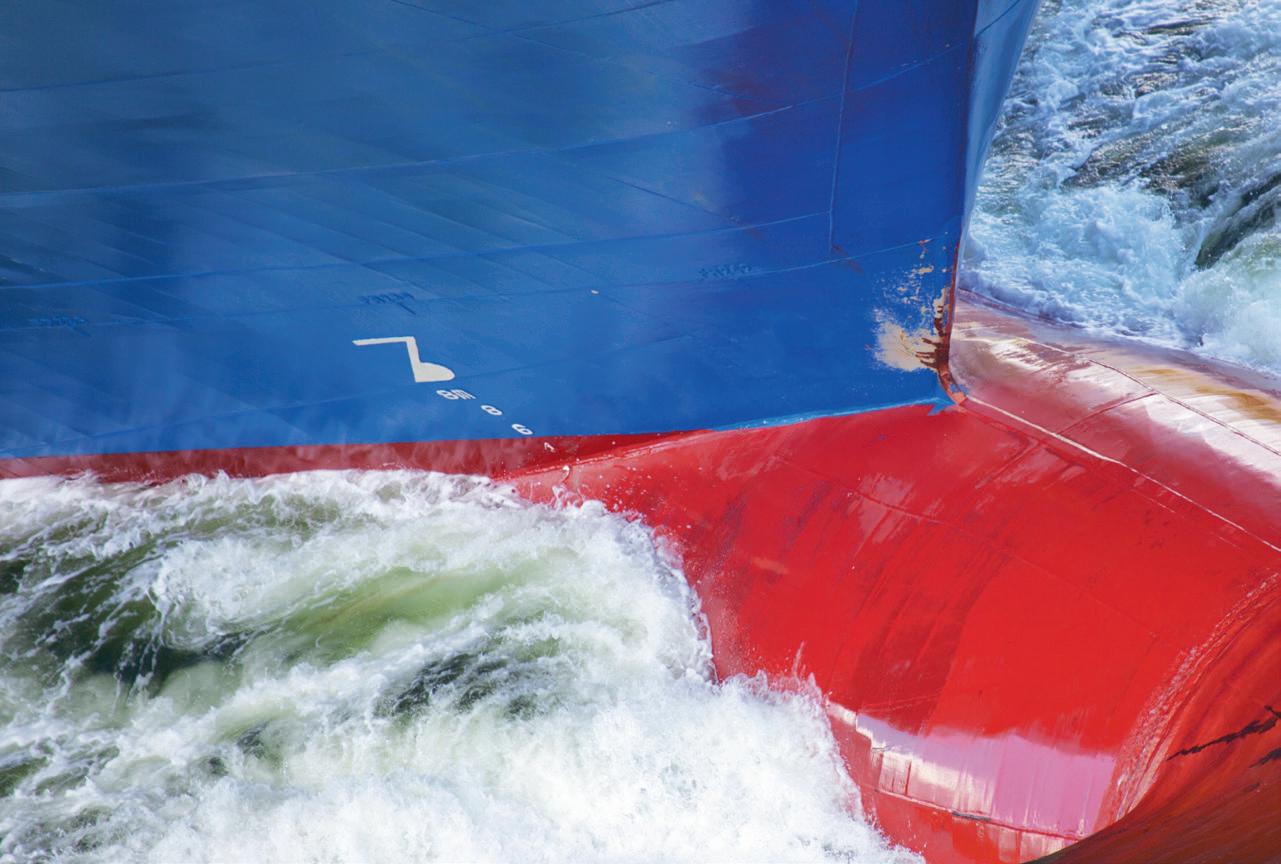
That notwithstanding, the year was also one of enormous insight and instruction for the Caribbean Shipping Association (CSA) and its service to our members and the region.
In taking the reins of this 50-plus-yearold organization, I was catapulted into a position that required serious assessment of our accomplishments, future goals and the actions that will help us achieve them. With the support of the CSA’s General Council, its Secretariat, and our members, we pursued our mandate as ‘the voice of Caribbean shipping industry’.
Milestones
The Association began the year strongly and was able to hit significant milestones despite the pervading virus effects and
FROM THE CSA PRESIDENT 2 Caribbean Maritime | February-May 2023
Marc Sampson President Caribbean Shipping Association
the uncertain economic state of the global industry. Among these successes were the launch of the Caribbean Research Institute to provide region-specific data to our stakeholders; the staging of the 20th Caribbean Shipping Executives’ Conference in Doral, Miami and the 52nd Annual General Meeting, Conference and Exhibition in San Juan, Puerto Rico; and important partnerships with the Women in Maritime Association, Caribbean (WiMAC), Grand Port Maritime de la Guadeloupe, and the CARICOM Private Sector Organization.
The also CSA counts among its highlights of the previous year, the staging of multiple training seminars to upskill its members and improve their ability to function in a fast-paced and increasingly technologically driven environment.
It is important that focus be placed on the growth and development of our human capital. In an world where the growing use of technology is central to progress, and multi-skilled personnel are of high value, we must put our resources towards preparing our staff for the increased adoption and integration of technology into our business operations.
Training
The Association undertook three wellreceived training interventions over the past year, focussing on the areas of negotiation skills, conflict management and cargo security. With fresh resolve and guidance by the CSA Training Trust Fund’s newly appointed lead, Stephen Bell, we anticipate even greater achievements over the course of the year. Already, the CSA renewed thrust has reaped success, raising US$92,821 at its recent AGM in Puerto Rico to fund its training and development push and provide scholarships for deserving maritime students at the Caribbean Maritime University.
Our ongoing collaborations with various regional and international partners to offer relevant and comprehensive workshops for our sector will form part of our core pursuits to offer training opportunities.
This year, 2023, will be a period of assessment and adjustment. Nevertheless, the Association will enhance its training
programs and support efforts to organize and promote strong and dependable associations to improve the operating structures without our respective territories.
The international maritime industry will return to some semblance of normalcy with freight rates expected to stabilize and the cruise shipping industry slowly returning to its previous peaks. The CSA, through its various committees and partnerships, will channel this momentum towards fostering an environment of resilience and cooperation for our holistic sustainable growth.
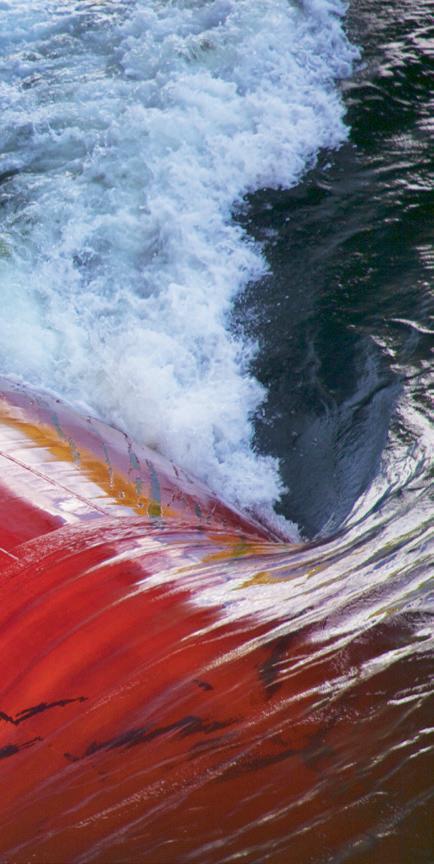
The CSA remains a staunch advocate for all its members. We acknowledge the importance of our industry and the need to move the dial forward in the promotion of regional advancement.
Having completed my first year as President, I wish to extend my gratitude to all who have expressed confidence in the Association’s trajectory in one way or another. It is my privilege to serve you and I anticipate your continued support and partnership.
I look forward to seeing you at the next Caribbean Shipping Executives’ Conference in Florida this May!

www.caribbeanshipping.org 3 www.caribbean-maritime.com
The international maritime industry will return to some semblance of normalcy with freight rates expected to stabilize and the cruise shipping industry slowly returning to its previous peaks”
How a football coach became A PORT
DIRECTOR Jonathan Daniels
Not everyone enters a career in the maritime sector via the most direct route. Port Everglades port director Jonathan Daniels certainly didn’t. His personal maritime career path is, perhaps, stranger than most – a college football coach who, by sheer hard work and determination, came to head up one of the US’ busiest seaports. This is his story.
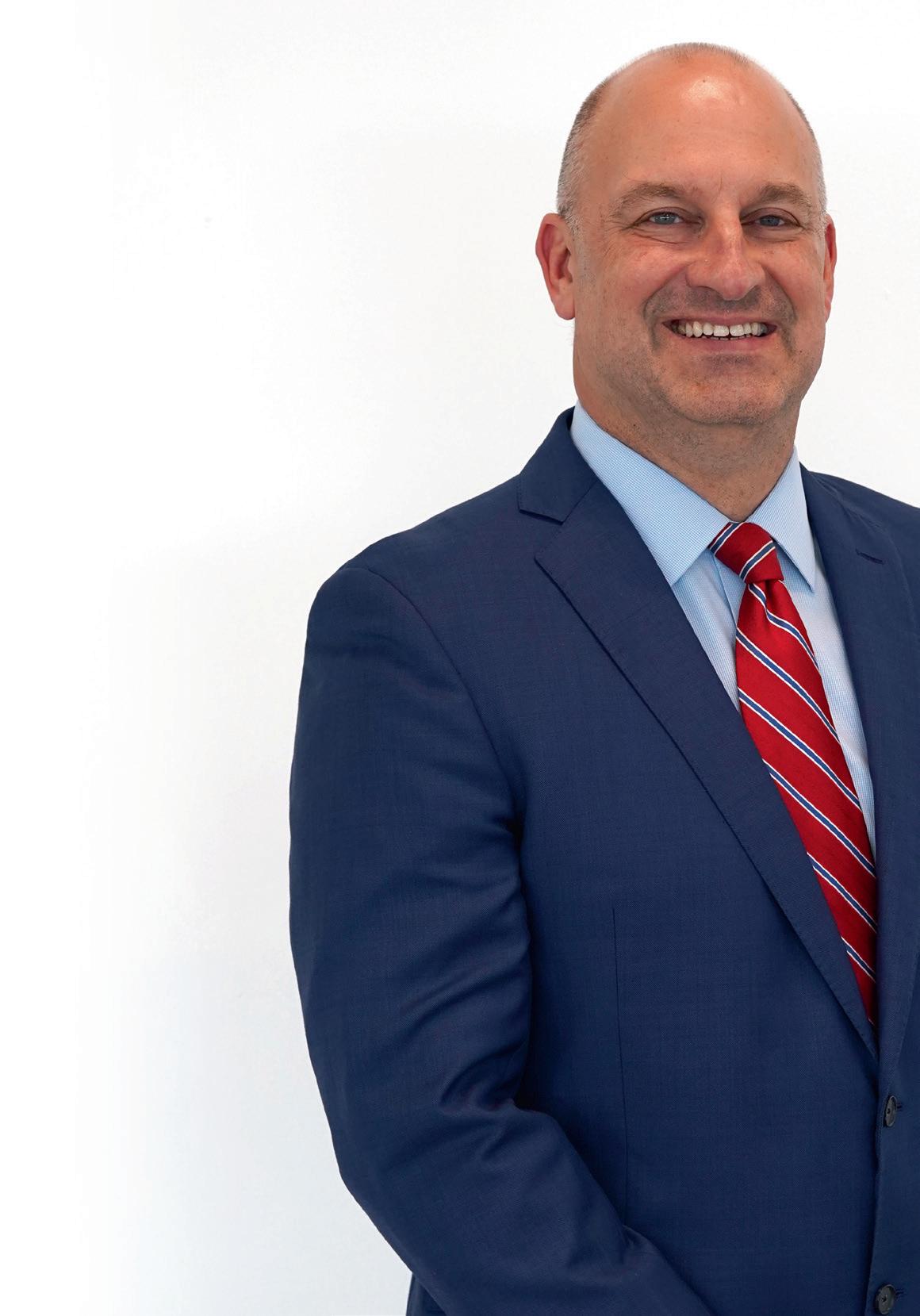
Q. Where were you born?

Q. What did your parents do for a living and what influence did they have on your early life?
A. Both my parents had a tremendous influence on the development of my character and career. My mother was responsible for nurturing my passion. My dad instilled a sense of adaptability and introduction to the maritime industry from his time as a longshoreman and a member of the US Coast Guard. He eventually became a college football coach.
PROFILE JONATHAN DANIELS 4 Caribbean Maritime | February-May 2023
A. Mohawk, New York
Q. Where did you go to school?
A. DeSales High School in Geneva, New York.
Q. What about college or university?
A. The Citadel and Maine Maritime Academy.
Q. In what subject(s) did you graduate?
A. At The Citadel, I earned a bachelor’s degree in Political Science and at the Maine Maritime Academy I was a Master of Science candidate in Maritime Management.
Q. After gaining a degree unrelated to the maritime sector, did you foresee a future career in port administration at that point in your life?
A. My first step was to follow in my dad’s cleats and become a college football coach at Maine Maritime Academy. During my childhood, we also had the opportunity to live in and visit many seaside communities. It was during those times that I recognized my strong draw to all things maritime.
Q. On graduating from the Citadel what was your first job and why did you choose to take it?
A. I was hired by the Maine Maritime Academy in Castine, Maine, as a football coach. As a coach, I was not initially in the middle of
the maritime world, however, being at the Academy exposed me to the culture of the industry and allowed me to see the training our student-athletes underwent as they pursued their seafaring and engineering degrees. I spent three years coaching football and lacrosse and then was asked to take a position as a Company officer in the Commandant’s office where I served for several years. My Citadel and Academy experiences prepared me for this position in which I was responsible for the training and discipline of 250 men and women. It was in this role that I was afforded my first true introduction into the maritime industry as part of my responsibility was to serve as a Watch Officer on a training vessel. It was at our first port of call that I saw my connection to a career in the maritime industry. When we docked and dropped the gangway, a gentleman carrying a big bag phone came aboard and exuded informed and decisive command of the vessel’s logistical plan. I was absolutely enthralled with the work he was doing. I later learned he was a ship’s agent. This was my first true exposure to the port industry. I was hooked.
Q. What inspired you to then enroll at Maine Maritime Academy? And did you enjoy your time in Maine and living in the small but historic town of Castine?
A. After my time on the academy’s training vessel as a Company Officer, it was apparent that I wanted to be involved in the maritime industry. My next step was to pursue a degree in that specific field. I was fortunate enough that Maine Maritime Academy had a master’s degree program in maritime management. So, I resigned from my position in the academy to become a full-time student.
I loved my time in Castine. It is an idyllic New England coastal community; a historic seafaring town. The first time you drive into Castine, you will feel transported back into the days of the working waterfronts and know with certainty that you are in a unique place.
Q. In May 2020 you were appointed by the Broward County Board of County Commissioners to the position of Chief Executive and Port Director. You had previously served for seven years as Executive Director at the Mississippi Port Authority at Gulfport. Was it a big step up from Gulfport to a port responsible for US$29 billion of economic activity annually and 10,000 direct jobs?
A. My previous experience in redeveloping Gulfport following Hurricane Katrina was intense and helped prepare me in many ways for this role. Joining an operation such as Port Everglades was a significant step and a welcome challenge. Port Everglades’ diversity is unlike any single port in the United States. However, reflecting on all my prior port stops, each one provided an opportunity to understand the complexities of Port Everglades’ diverse lines of business.
Q. You are currently chair of the Florida Ports Council. This must have been an honor. But what have you brought to the role and how do think your three-year tenure will be viewed when you step down later in 2023?
A. As CEO and Port Director of Port Everglades, I bring to the role an understanding of all the business lines that Florida’s 15 ports manage. My career has spanned all levels of cargo movement and cruise operations, and I do my best to share that perspective with my counterparts. I also work closely with my colleagues to establish a strategic direction to strengthen Florida’s ports. I have been able to work with the council’s administration, Florida’s governor and Florida Department of Transportation to strengthen the alliance across all of Florida’s ports allowing us to market globally as a complete port system.

5 www.caribbean-maritime.com
As a coach, I was not initially in the middle of the maritime world, however, being at the Academy exposed me to the culture of the industry”
JONATHAN DANIELS
Q. You also serve and have been elected for a second term on the Board of Directors of the American Association of Port Authorities, and you are a member of the AAPA National Defense Committee. Additionally, you sit on the Board of the Greater Fort Lauderdale Chamber of Commerce and the Greater Fort Lauderdale Alliance of Broward County. It’s often said that if you want something done, ask the busiest person. You seem to be that busiest person. Is it difficult to juggle your various roles?
A. Juggling is what we do as port directors every day with the goal to support our partners and stakeholders. As port directors, it’s incumbent on us to serve all maritime and economic development issues relevant to the regions where our ports reside. I consider it a privilege to contribute in so many ways.
Q. Port Everglades is currently the world’s third busiest cruise port. What is the Port doing to maintain this position? What is your estimation of this year’s cruise passenger traffic?
A. Initially, our projection for cruise passenger traffic was conservation, with an estimate of approximately 2 million passenger moves for the current fiscal year. All signs are now pointing to a number approaching 3 million passenger moves this year. Our long-term focus is on ensuring the port is a source of strength, resiliency and sustainability in the cruise industry. While we have some of the largest cruise ships calling, we also pride ourselves in welcoming a
more specialized, ultra-high-luxury cruise product. Our diverse cruise portfolio -- in an ever-changing industry -- mandates that we evolve to meet the needs of a varied clientele in addition to the redevelopment of Cruise Terminal 4 into a homeport for Disney Cruise Line. We are evaluating additional terminal redevelopment as well as the addition of new berth capacity. These significant investments being made in this particular business line will ensure our ability to grow, accommodate additional lines as well as cement that we are always seen as a leader in providing exceptional customer service.
Q. Port Everglades has been growing as a container gateway, so how pleased were you (and operator Florida International Terminal) to secure CMA-CGM’s new America XL service from the west coast South America?
A. It’s a testament to our people and, in particular, the members of the International Longshoremen’s Association, that global ocean carrier CMA CGM is partnering with Florida International Terminal to bring the new service to Port Everglades. While most in the maritime industry view our port as a premier cruise gateway (of which we are), it’s our continued growth in accommodating containers, breakbulk and energy that shows the strength of the port as a global leader. We are the top port in the US serving Latin America making us a primary gateway to international business. As part of our drive to strengthen operations and position the port to be doubly resilient, we continue to attract and retain operators that bring value to the growing Caribbean market.
Q. Beyond cruise traffic and containers, Port Everglades has also successfully won other, perhaps, less-glamorous cargo flows in recent months. How important is it for Port Everglades to have a diverse cargo base and do you see further scope to broaden the number of cargoes being handled?
A. Our diverse portfolio of operations is what makes this port sustainable and
successful. Our cruise business continues to expand, and our containerized operation is making significant inroads. However, it’s our energy market that fuels our value to South Florida and its economy. You do not fly or drive in/out of this area without using products that come from Port Everglades. Jet fuel from our port is sent to a handful of international airports in Florida, including Miami, Fort Myers/Southwest region, Key West, West Palm Beach and, of course, our next-door neighbor Fort LauderdaleHollywood International Airport. We are the sole provider of gas for South Florida and Martin County and our efforts in the perishables market provide our partners with direct access to the blossoming Latin American and Caribbean markets. It’s this type of cargo movement that will continue to pump up South Florida’s economy.
Q. In May, Fort Lauderdale (also in Broward County) will host the CSA’s Caribbean Shipping Executives Conference (CSEC)? Are you looking forward to welcoming those from around the Caribbean to Port Everglades?
A. We are proud and honored to be the backdrop of the CSEC and host leaders who can drive future business growth. This will be an opportunity to welcome our colleagues and friends to Broward County and Port Everglades and show them what makes South Florida attractive for work and play. We look forward to working with our colleagues to share best management practices and learn what is driving the maritime industry in the region.
Q. Outside of work, what are your main interests and hobbies?
A. I love to experience all things South Florida. The culture, food, ambiance and atmosphere in this region, with its Caribbean influences, are virtually unmatched. Of course, as a reformed college football coach, in the fall I enjoy watching a variety of teams on Saturdays. I also enjoy traveling, primarily to the Northeast where I still have family, and visiting the wine country of upstate New York.
6 Caribbean Maritime | February-May 2023 PROFILE
While many people in the maritime industry view our port as a premier cruise gateway, it’s our growth in the containerized market that adds a feather to our cap”
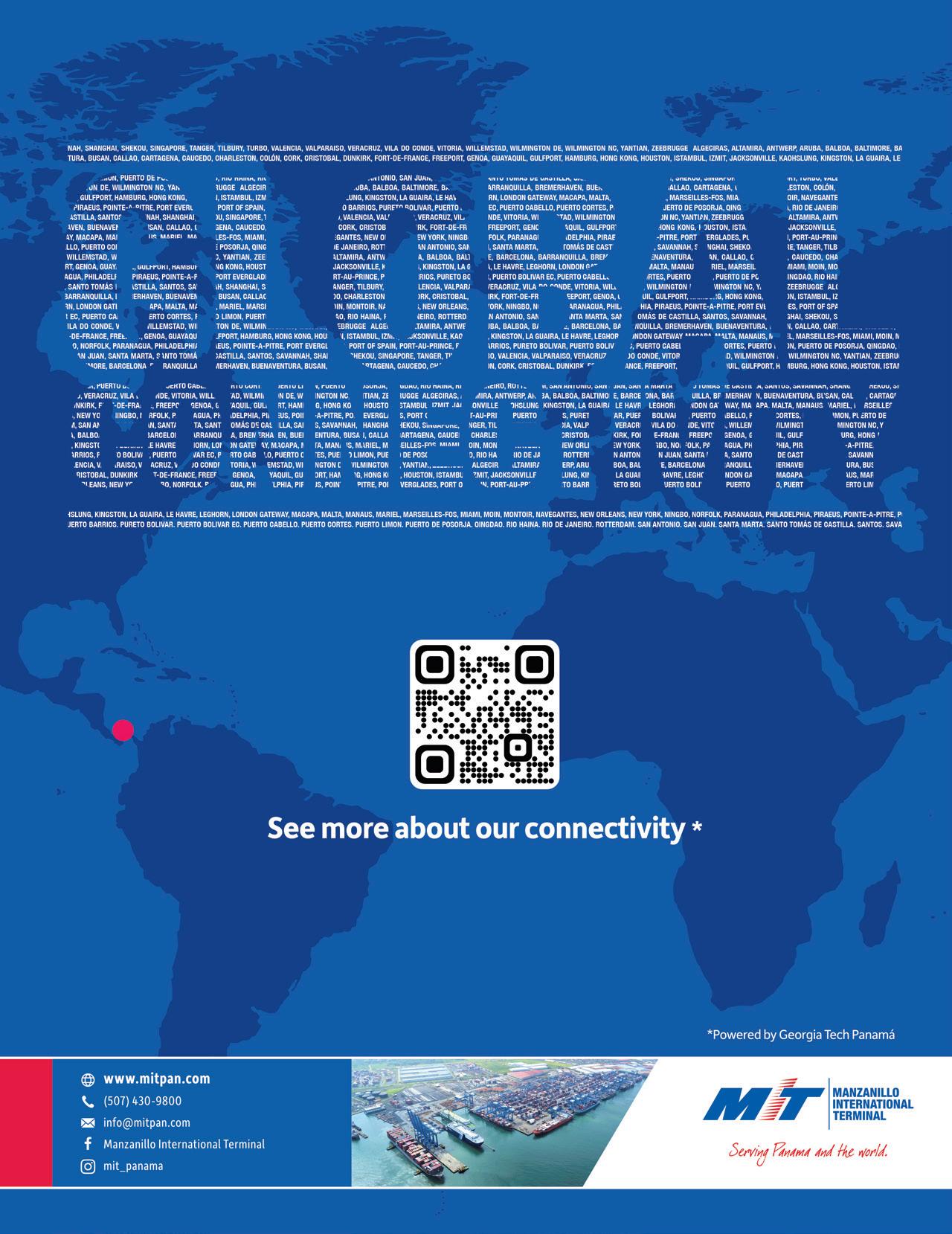

The Caribbean’s BRI benefits
China has always been an enigma to the rest of the world, with the true potential of this “developed” country of the developing world, not very well understood. Due to the size of its economy, technological progress, enviable productivity, manufacturing competence and extensive overseas assistance, it is often difficult to remember that China is indeed a developing country, seeking sustained growth by facilitating overseas development of its trading partners.
China’s domination in global trade, along with its investment into the Belt and Road Initiative (BRI), make it an imperative for Caribbean countries and maritime actors to understand the work that China has been undertaking in the Caribbean. Investments under the BRI are expected to boost trade relations and enhance logistic chains, thereby facilitating mutual development between China and countries participating in the BRI. At least ten Caribbean countries have signed a BRI MoU with China.
Financing and building of infrastructure in health care, ports, dry docks, logistics, trade and investment partnerships as well as research and educational partnerships are among the areas that are enabled through the BRI. The Caribbean Community (CARICOM) has also created a CaribbeanChina Economic and Trade Forum. This article seeks to outline some of the key initiatives being undertaken.

Maritime Infrastructure
China has been investing significant sums in the Caribbean both under the BRI and other cooperative agreements. The table below is an extract that shows the volume of foreign direct investment that came into the region.
See table 1 on page 10: Foreign Direct Investment flows from China to Caribbean 2013-2021.
The investments into ports and climateresilient infrastructure is especially important given that the majority of the Caribbean is constituted by Small Island Developing States (SIDS), that are often left dealing with the loss and damage of infrastructure and livelihoods due to the impacts of climate change.
Faced with rising sea levels that threaten coastal infrastructure, along with intensified weather patterns that generate unprecedented flooding, Caribbean
countries need to ensure that they adapt by creating resilient infrastructure. Nearly half of cross-border flows related to China’s BRI are directed to regions that are exposed to a significant level of climate change risk. China is also committed to reducing its net carbon emissions to zero by 2060, so investment into infrastructure that will enable greater efficiencies, operationally and logistically is mutually beneficial.
See table 2 on page 10: The table shows the investment in stock to some of the Caribbean countries for the period 2013- 2021.
Guyana is also participating in the BRI and hopes to access funding for the Demerara Harbour Bridge as well as a highway route linking it to Brazil. China’s
9 www.caribbean-maritime.com CHINA IN THE CARIBBEAN
Vivian RambarathParasram LL.B LL.M LEC M.Jur. Assistant Professor Centre for Maritime and Ocean Studies The University of Trinidad and Tobago
Foreign Direct Investment flows from China to Caribbean
aid to Guyana in the past included support for the acquisition of marine vessels for the Essequibo River and the Arthur Chung Conference Centre.
In May 2018, China and Trinidad and Tobago signed the MoU on the BRI, making Trinidad and Tobago the first Englishspeaking Caribbean country to participate in the BRI. The Phoenix Park Industrial Estate (PPIE), a flagship project under the BRI between the two countries, is currently under accelerated construction. The development cooperation between China and Trinidad and Tobago has grown deeper, generating fruitful results, as China provided financial support for the construction of other large-scale projects.
Another significant development is also underway with the Dominican Republic for the construction of a mega port, power installations, and support for trade facilitation. This is being facilitated though a loan of US$ 600 million.
Maritime Education, Training and Research
Source: Adapted from 2021 Statistical Bulletin of China’s Outward Foreign Direct Investment (http://fec.mofcom.gov.cn/article/tjsj/tjgb/)
The University of Trinidad and Tobago (UTT) has signed an MoU with Shanghai Maritime University (SMU). This collaboration is expected to build on the foundations of collaboration which started under the Global Maritime Technology Cooperation Centre Network (GMN) Project entitled “Capacity Building for Climate Mitigation in Maritime Shipping”.
The opportunity to host one of the five MTCCs under the GMN Project, implemented by the International Maritime Organization (IMO) and funded by the European Union opened in 2016. Both Universities emerged as successful hosts through a competitive bidding process. UTT’s Centre for Maritime and Ocean Studies became the host for MTCC Caribbean, while SMU became the host of MTCC Asia.
Source: Adapted from 2021 Statistical Bulletin of China’s Outward Foreign Direct Investment (http://fec.mofcom.gov.cn/article/tjsj/tjgb/)
Along with sister MTCCs in the Pacific, Latin America and Africa, the project facilitated capacity building across 90 countries, positively impacting maritime administrations, reaching thousands of maritime professionals and therefore enhancing the
10 Caribbean Maritime | February-May 2023 TABLE 1
2013-2021 20132014 2015 2016 2017 2018 2019 2020 2021 JAMAICA 4.74 111.32 – 418.64 82.46 156.21 -112.47 -2.78 -9.16 MEXICO 49.73 140.57 -6.28 211.84 171.33 378.45 163.56 264.56 231.83 PANAMA 187.68 4.81 23.82 37.38 57.74 127.24 3.31 117.88 239.88 ST. LUCIA – – 0.15 0.75 3.29 – -0.58 – –ST VINCENT AND THE GRENADINES – 3.32 3.03 -2.53 3.37 1.22 – – -0.34 SURINAME 29.00 -16.90 20.09 3.43 52.53 -1.73 40.58 -1.21 -1.78 TRINIDAD AND TOBAGO 0.23 36.25 9.15 2.10 12.40 15.17 23.36 -10.47 4.71
TABLE 2 Investment in stock to the Caribbean 2013-2021 2013 2014 2015 2016 2017 2018 2019 2020 2021 ST LUCIA – – 0.15 1.44 4.73 4.73 4.15 4.15 4.15 ST VINCENT AND THE GRENADINES 36.20 39.00 42.04 39.52 42.88 43.74 43.21 40.29 39.94 SURINAME 111.93 93.93 113.52 125.08 164.39 99.40 132.69 92.08 37.75 TRINIDAD AND TOBAGO 3.86 1025.31 604.63 606.66 621.77 637.09 660.46 633.53 112.51
CHINA IN THE CARIBBEAN
implementation of international maritime regulations related to climate-change mitigation. Given the success of the GMN and the MTCCs in their individual capacity, China sponsored a paper at the IMO which led to the creation of the Greenhouse Gas (GHG) Trust Fund. This fund is expected to assist the IMO in building capacity in SIDS and Least Developed Countries (LDCs) for the reduction of GHG emissions from shipping Collaboration between UTT and SMU, while embryonic, promises great opportunities for research and development as well as student and staff exchanges. The partnership offers the opportunity for Caribbean scholars to gain a deeper understanding of geopolitics, international trade and developments in maritime law from a perspective that was previously of limited access.
In addition to financing, research and development, and deepening trade relationships, the Chinese investments into building the developing world and the Caribbean in particular, offers opportunities to enhance on-going efforts at creating resilient maritime infrastructure. Technology transfers provide the foundations from which the much-desired green ports and decarbonized shipping may yet be developed. CARICOM needs to enable a harmonized approach to maritime ports

and infrastructure to ensure that the countries of the region move forward together.
Vivian Rambarath-Parasram is an Assistant Professor at the Centre for Maritime and Ocean Studies of The University of Trinidad and Tobago. Vivian is also the Director and Head of the Maritime Technology Cooperation Centre-Caribbean. Her core areas of research include, developing the Blue Economy, climate action, ocean governance and maritime regulatory reform.
11 www.caribbean-maritime.com
Given the success of the GMN and the MTCCs in their individual capacity, China sponsored a paper at the IMO which led to the creation of the Greenhouse Gas (GHG) Trust Fund”
CariPorts project looks for REGIONAL ENVIRONMENTAL SOLUTIONS
In almost all land areas, we are witnessing rising temperatures, increased periods of drought, rising sea levels, coastal erosion, but also an increase in the severity of hurricanes. All these climatic events remind us of our vulnerability to the consequences of climate change. The Caribbean is no longer immune to this type of event. The small size of our territories, the crucial role of our port logistics platforms and the fragile balance of our ecosystems call for our ability to put in place collective solutions.
During the 49th Annual General Meeting of the Caribbean Shipping Association (CSA), Sita Narayanan from Guadeloupe Port Caraïbes (GPC) gave a presentation on the theme "Climate
change, Game changer for Caribbean Ports". Following this presentation, the opportunity of a joint project between the CSA and GPC was born.
Indeed, the CSA and GPC share this common will to find solutions to face the climate change at the Caribbean scale. A grant application was therefore submitted for the CariPorts project under the INTERREG Caribbean program.
Co-operation
INTERREG Caribbean is a European program aimed at strengthening co-operation in the Caribbean. In October 2021, a favorable decision was made for the programming of the CariPorts project, and a European Regional Development Fund (ERDF) grant was awarded to implement the project.

CariPorts is a prefiguration project of an environmental label for Caribbean ports. It is the result of a desire to disseminate the know-how acquired by GPC in the management of natural areas but also a desire to exchange information with the Caribbean. The project aims to increase the capacity of Caribbean ports to respond to the increase in natural risks accentuated by global warming. The aim is to build a robust and mutual Caribbean port response and thus develop a resilience model. The ultimate objective is to create an environmental label for
Caribbean ports and to provide a tailormade support to integrate environmental issues in port development.
Indeed, the challenge is to involve two volunteer Caribbean ports in the CariPorts approach to analyze and determine the means to increase the environmental competence of Caribbean ports.

Four main work packages constitute the backbone of the project: The implementation of an environmental diagnosis for each of the two selected ports (Work Packages 1).
5 Capacity building of port stakeholders by identifying local operators, analyzing existing relationships and preparing a report with recommendations for the progressive development of relationships between ports and local stakeholders (associations, scientists, etc.) (Work Package 2).
12 Caribbean Maritime | February-May 2023
CARIPORTS
5 The deployment of an integration strategy including a strategic roadmap to integrate the most pressing climatic and environmental issues, the needs, and solutions in terms of financing the operations to be carried out.
5 The dimensioning of an environmental label for Caribbean ports through the feedback of the operations described above.
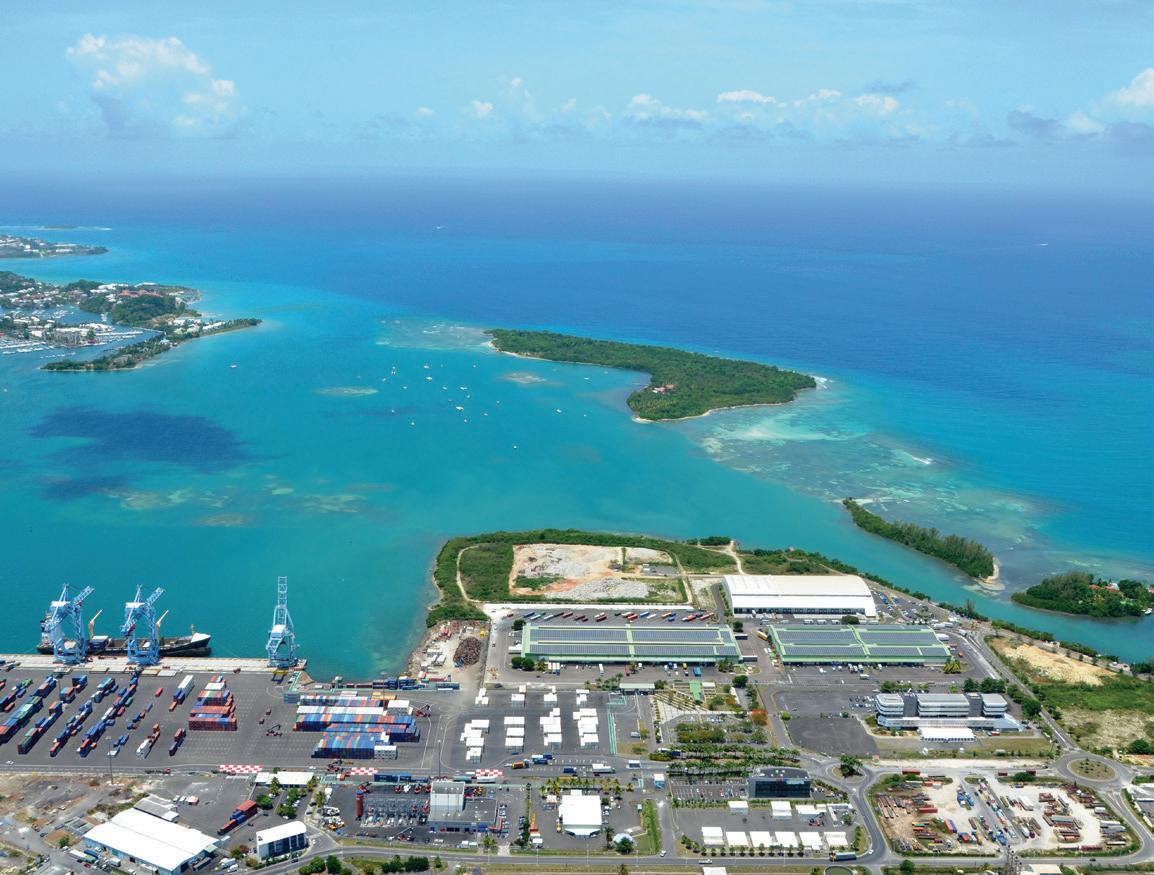
The Work Package 1 started in the second quarter of 2022 with the
recruitment of a team dedicated to the CariPorts project.
The official launch of the project took place on 29 September, in the presence of Milaika Capella Ras, General Manager of the CSA and part of the port community of Guadeloupe. During this launch, a presentation of the project and its objectives was made. This event officially signed the start of the project and the involvement of the CSA which committed itself to invest in its implementation and in the search for solutions to face climate change at the Caribbean scale.
The participation of a delegation of GPC comprising members of the CariPorts team at the 52nd Annual Conference of the CSA, in San Juan from October 31 to November 03, 2022 has given a new twist to the project. This event was an opportunity to present CariPorts to CSA members and meeting participants. These presentations allowed the CariPorts team to highlight the stakes of the project for the Caribbean territories and ports but also to make a call for applications before the selection of the partner ports which will be the major event during first quarter 2023.
13 www.caribbean-maritime.com
chromoprisme / Shutterstock.com
The ultimate objective is to create an environmental label for Caribbean ports and to provide a tailor-made support to integrate environmental issues in port development”
CSA Port of the Year award 2022
The Caribbean Shipping Association (CSA) has been organizing a Port of the Year Award for 35 years and the presentation of the coveted trophy is a key feature of the spectacular gala dinner held on the last evening of the organization’s AGM.
After being contested for many years as two separate awards – Container Port of the Year and Multipurpose Port of the Year – it was decided in 2021 to merge the two and create a single Ludlow Stewart Container Port of the Year Award.
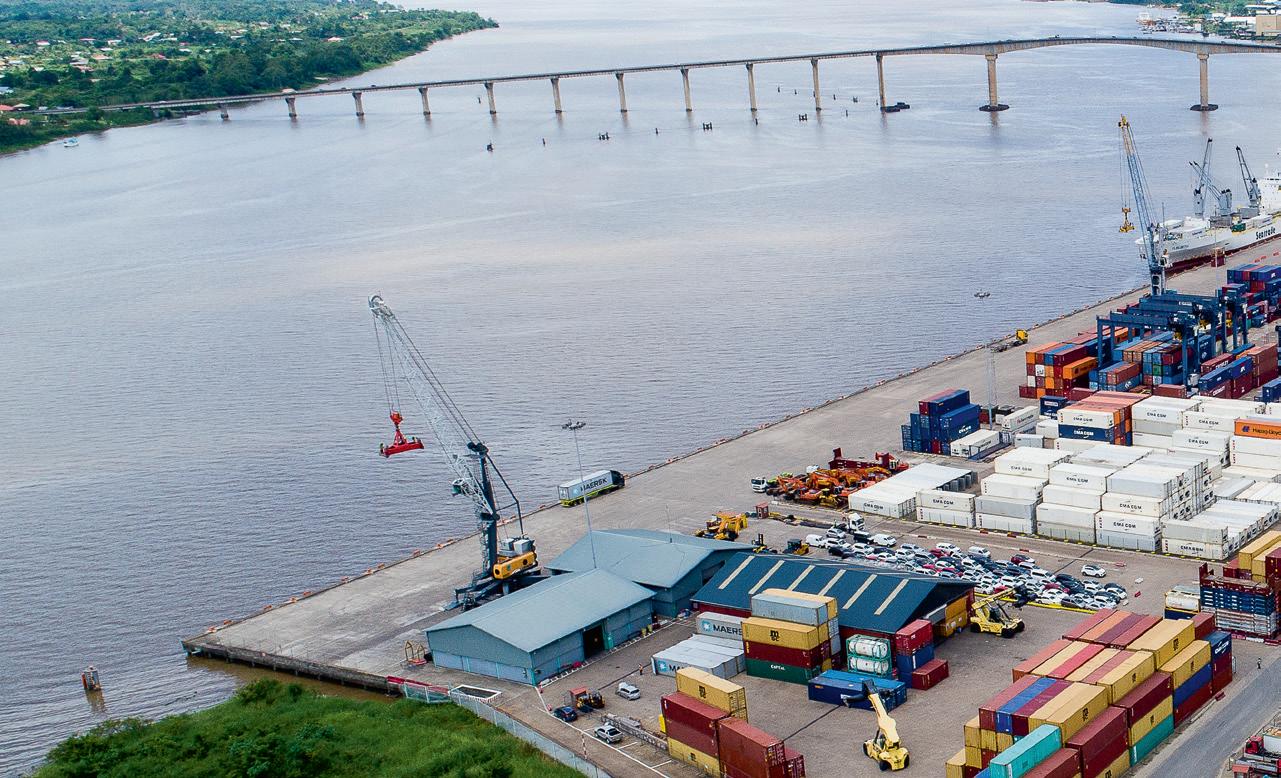
The first winner of the merged award was Grand Bahama-based Freeport Container Terminal, beating strong opposition from DP World Caucedo and Barbados
Port Inc. Freeport Container Port featured strongly again this year as the Bahamian terminal fought to retain its title.
But in the end, the panel of judges – led by the eminent Roland Malins-Smith –decided that the 2022 award should go to Havenbeheer Suriname (HBS).
Presentation
A clutch of black-tied HBS senior executives were out in force on the night of November 2 to receive the award from Roland Malins-Smith. The presentation was met by cheers by hundreds of attendees from the Caribbean shipping industry who gathered in the ballroom at San Juan’s Sheraton Puerto Rico Hotel & Casino.
The choice of HBS may have been a surprise to some, but the canny MalinsSmith really does know his stuff and, after careful and close examination of the various submissions he, and his fellow panel members had no hesitation in sending the trophy to Suriname.
Caribbean Maritime caught up with delighted HBS General Director Andreas Talea and he had this to say about the win and what it means for the port and its employees.
He said: “Winning the award is proof to us that we have, to the best of our ability, fulfilled our duty. We are service providers and facilitators of development.
“We are fully aware of the position we
14 Caribbean Maritime | February-May 2023 PORT OF THE YEAR HAVENBEHEER
SURINAME (HBS)
Winning the Award is a special motivation to continue the path we have chosen. There are many new challenges ahead and to meet the new challenges we will also forge new meaningful partnerships”
fulfill as a hub in the economy and are consciously focused on influencing and turning around for the better everything we can within our scope.
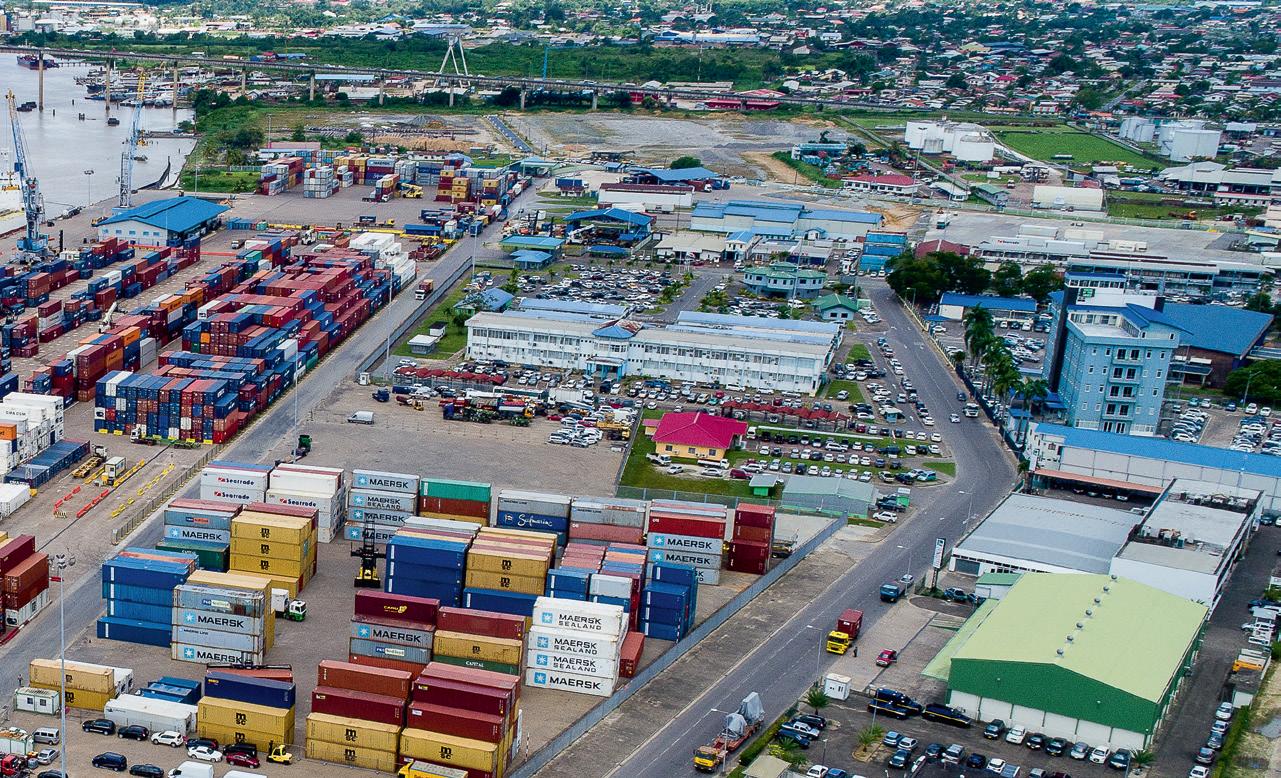
“Winning the Award is a special motivation to continue the path we have chosen. There are many new challenges ahead and to meet the new challenges we will also forge new meaningful partnerships. We strongly believe that by joining forces we will be able to achieve even greater goals.”
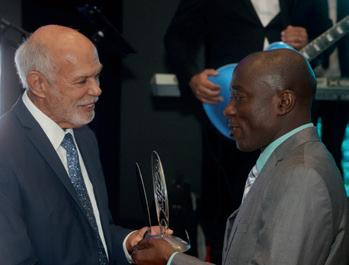
Can HBS retain the Award in 2023? Time will tell, but like 2022 it’s sure to be another tightly fought but good-natured contest.

15 www.caribbean-maritime.com
Senior executives from Havenbeheer Suriname and others from the Paramaribo maritime community gratefully receive the Ludlow Stewart Caribbean Port of Year Award from CSA President Marc Sampson (left), chair of the judging panel Roland Malins-Smith (second left), and General Manager Milaika Capella-Ras (third left).
New ports and bases taking shape
These are exciting times for Suriname and for those involved in the port and cargo handling sectors
If all indications are correct, Suriname is set to emulate neighboring Guyana in transforming its economy and becoming a newly oil-rich nation.
But to do so, and like Guyana, Suriname must address a lack of port infrastructure. Currently, the ports are inadequate to meet the needs of what is a fast-growing oil and gas industry and associated economic growth.
Many locally can see what’s required and as a result, Suriname is awash with multi-million-dollar offshore oil and gas support base projects. All five are in and around Paramaribo.
Caribbean Maritime is looking at the key protagonists. The backers of the various schemes comprise the nation’s two main stevedores, the port company and two other players.
So far two of the five bases are operational on a day-to-day basis – at the main port in Paramaribo (where existing
facilities are used) and one just to the south – while one is under construction and two others are at various stages of the evaluation and planning processes.
Unlike Guyana, nascent oil sector is only in the exploration and appraisal phases with no confirmed Final Investment Decisions by major oil companies – either in terms of construction or production. So, at this moment no one location is ready for any big development. But it’s important to be prepared and have at least the basic infrastructure ready to be able to compete in a tender, as the backer of one local scheme told Caribbean Maritime.
As such, it’s still uncertain what shore base capacity will be needed, but measured by what has happened in Guyana, these projects and proposed projects are unlikely to be an under-estimate of what will be required. Here’s where we are regarding the planned new projects:
Redeveloping Paranam
Could a Paranam shore base be the perfect economic and environmental solution to support Suriname’s budding billion-dollar oil and gas industry? Local and well-established local stevedore VSH Transport seems to think so.
As VSH Transport sees it, the Atlantic waters of the Guyana-Suriname Basin have become one of the world’s hottest oil and gas drilling zones. To ensure Suriname maximizes the economy-transforming potential of the recent discoveries made off its coast it will need dedicated port facilities to support a ramping up of operations.
VSH Transport has identified Paranam on the left bank of the Suriname River, as the perfect fit for a base. The port already has the infrastructure in place in the form of a riverside industrial area, which can be easily
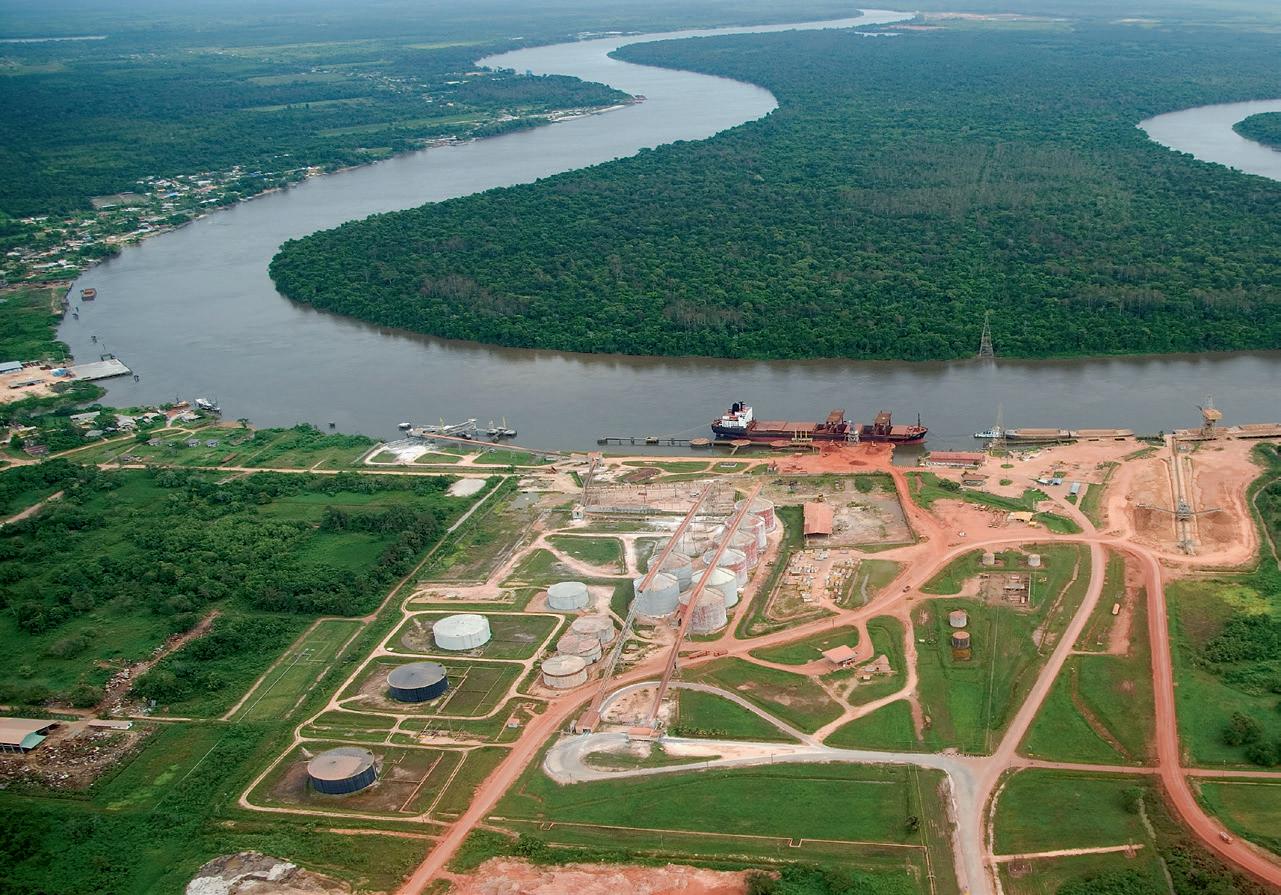
16 Caribbean Maritime | February-May 2023
SURINAME
re-purposed to an offshore support base for the oil and gas industry. Consequently, the site offers a short start-up time in keeping with the Suriname government’s commitment to begin commercial offshore oil production within the next five years.

Full compliance
The pre-existing site allows for work to be carried out in full compliance with the global Sustainable Development Goals (SDGs). The development will have no additional impact on the environment and its position two hours downriver from the Atlantic means there will be no impact on Suriname’s fragile and lowlying coastline. It is also far enough away from Paramaribo for development not to impinge on the quality of life of its residents. Paranam is only two-hours’ sailing from the Atlantic Ocean, while good road
links easily connect to the capital and Johan Adolf Pengel International Airport.
Given that so much of the basic infrastructure is already in place, VSH Transport’s managing director Sjoerd Poort believes that in terms of a phased development a relatively small initial investment is required.
As such, the funding requirement is equally modest and evaluating what will be required is where the proposed project now sits. As Mr Poort explains: “It really depends on the scale and needs of the industry.”
In fact, the caution attached to the proposed first phase could see facilities created for an exploration project up and running in three-to-four months.
Despite Suralco’s public ownership, the government is not directly involved in the scheme but will have to cooperate in facilitating the regeneration of the wider Paranam area as an Industrial & Commercial Park. In any case, there are clear synergies between the two schemes: “They can surely co-exist and would even be mutually beneficial. That is the basis of the plan. One centralised industrial area for Suriname. Keeping transportation to a minimum and all suppliers/customers in one location,” Mr Poort explains.
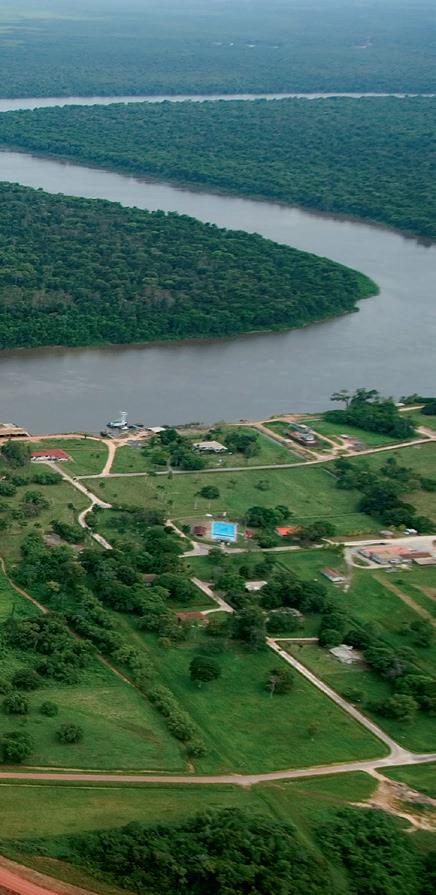
Mr Poort also foresees some sort of role for the Port of Paramaribo with the handling of increased cargo volumes destined for the Paranam project.
Preparing Paranam for any new role appears to be relatively straightforward. Says Mr Poort: “The two existing quays have always been used for general cargo, they need some upgrading (and eventually extension) but are readily suitable for offshore cargo. The facilities for bulk handling are next to the quays and are not needed for the offshore base. They can be dismantled, or perhaps refurbished should there be a need for exports of bulk.”
Location
Of course, Paranam is two hours sailing time down the Suriname River and while, at first glance, this might appear a disincentive there are many compelling reasons for choosing the location. As Mr Poort says: “Since all suppliers and facilities are in one central location this efficiency of a ‘one stop shop’ will offset the extra sailing time. For the past years, and still today, the main supply base is in Trinidad which is more than four times the distance from the offshore location. The extra distance is relative.”
So, in short, Paranam appears to offer a speedy, and most environmentally sustainable option for maximising the oil and gas finds that are now part of Suriname’s industrial development and will be for decades to come. It will also serve as a centralised area able to support oil and gas, and equally importantly Suriname’s mining and other industries.
17 www.caribbean-maritime.com picinfo@alcoa.com
Expanding Kuldipsingh Port
Kuldipsingh Port Facility (KPF) is a privately owned terminal in Wanica District and located on the Suriname River approximately 3 km upstream of the Jules Wijdenboschbrug Bridge in Paramaribo.
KPF has invested US$ 14.5 million, via the Inter-American Development Bank, to expand the port’s jetty by 180 meters (from 220 meters to 400 meters) and is already fully operational as a base.

KPF’s cargo terminal has traditionally focused on the export of logs, and the import of construction materials but is now providing logistic services to support the offshore oil and gas industry. The terminal has an open storage yard for the logs and a warehouse for the construction materials as well as products related to gold mining operations.
KPF is one of 11 companies in the Kuldipsingh Group of Companies, including affiliates in the construction, concrete, oilfield services, and other fields.
Commewijne Port (Comport)
Another piece of the Suriname offshore support base jigsaw is the planned Commewijne Port or Comport.
First proposed in late 2020, this proposed scheme has been caught up in the investment decision delays and awaits a go ahead.
Choosing Suzannadaal
Located in Commewijne district and across the Suriname River from Paramaribo, the US$ 100 million Suzannadaal shore base project was launched in August last year by President Chandrikapersad Santokhi.

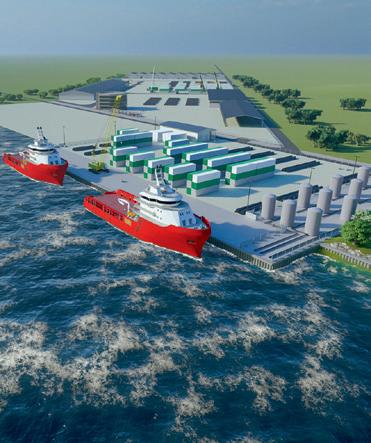
It’s an initiative of terminal operator DP World Paramaribo, which will undertake the construction together with the local HJ De Vries Project Development Group and FIRM Engineering. The base is set to be the closest in the Paramaribo area to the Atlantic Ocean.
The 50-hectare base with a 1,000meter waterfront is expected to have huge benefits for Commewijne and the surrounding area. The base will have a depth of seven meters alongside. When complete, there will be a maritime industrial park. Commewijne is connected to Paramaribo via the busy two-lane Jules Wijdenbosch Bridge.
As Serge Tjin from Icarus GEO told Caribbean Maritime: “With the postponed final investment decision by TotalEnergies, and first oil now indicatively projected in 2027, instead of 2025, we are eagerly awaiting the upcoming developments, including appraisals and drilling results, to continue our further preparations for the project.
18 Caribbean Maritime | February-May 2023
SURINAME
President of Suriname
©2016 Guillo Grant
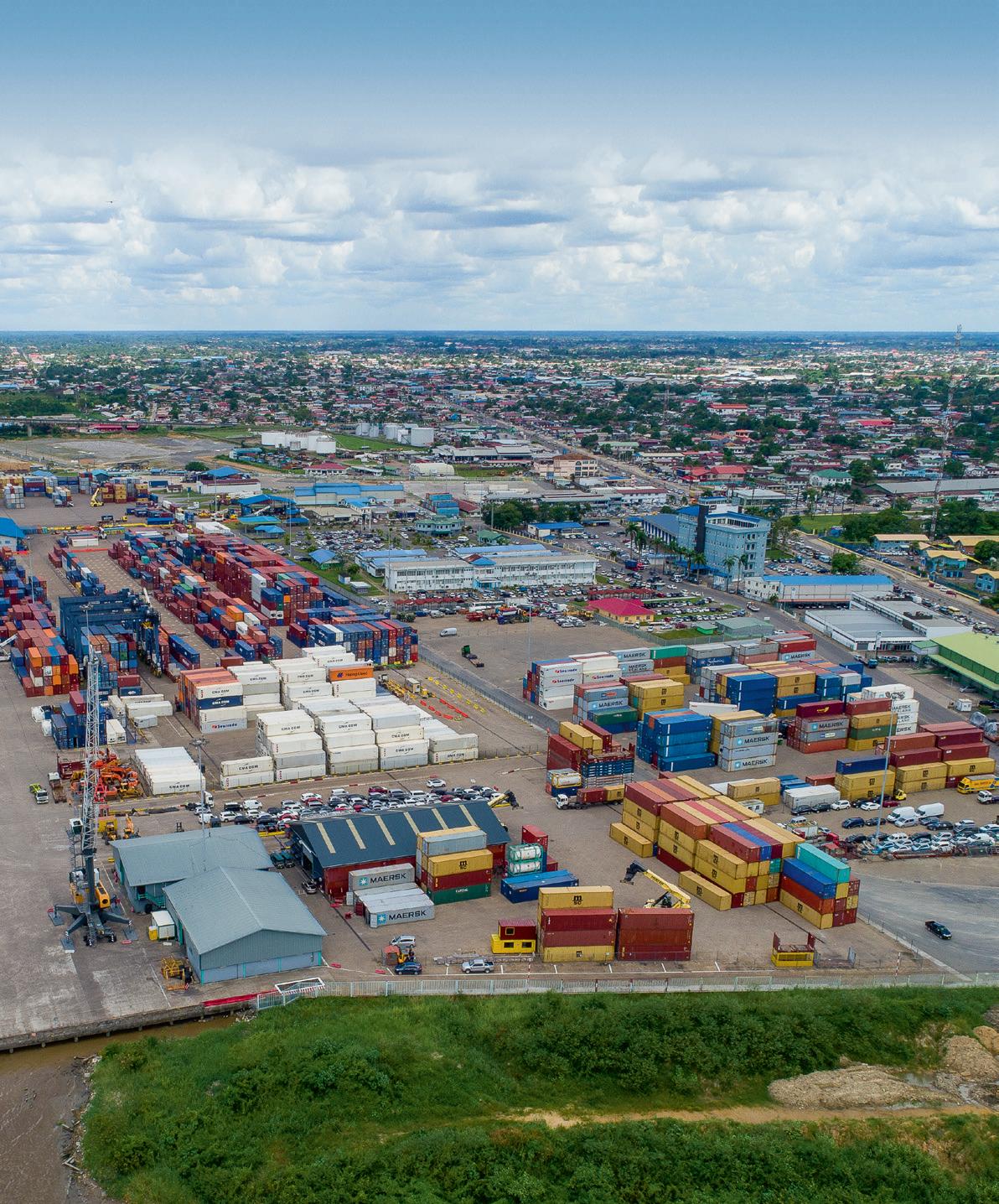
19 www.caribbean-maritime.com
Port of Paramaribo’s Jules Sedney Terminal
Nickerie deepwater port gets the Green light
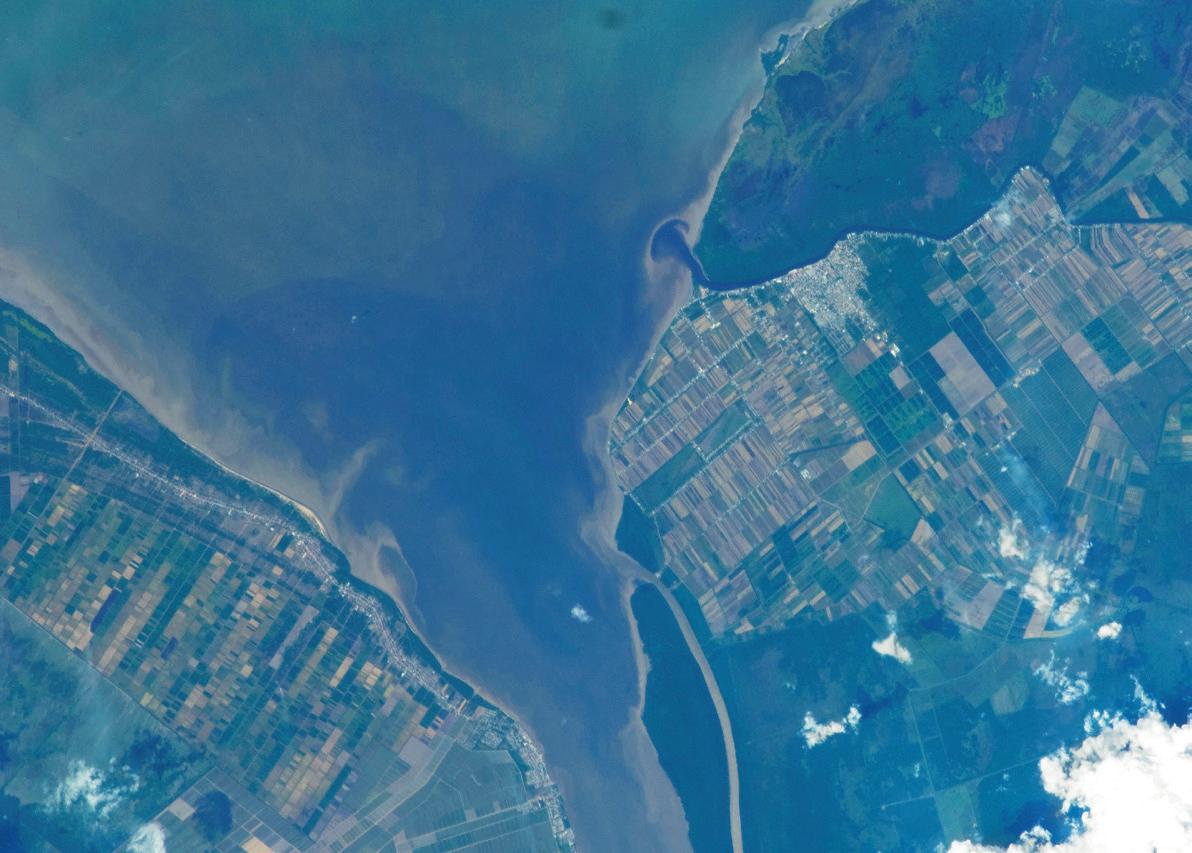
After more than two years of evaluation and discussion, Havenbeheer Suriname (HBS) Managing Director Dr Andrea Talea officially announced late last year the go ahead what is described as the Port of Nickerie’s ‘Deep-water Port & Special Economic Zone.’ This will be a major undertaking.

To start the ball rolling, some improvements will be made to the existing port’s basic infrastructure and much more importantly, the construction of new facilities designed to bring gas ashore.
The new offshore port will be developed in phases. “The initial focus is on gas extraction. An energy plant will be set up first and a factory for converting natural gas into LNG and LPG for own use (a small part) and the vast majority for export. The parts are due to arrive in February 2023
and in the last quarter of 2024 it should be operational,” Dr Talea confirmed.
Water depth
The port will be located about 14 km from shore. The idea is to create an island where the natural water depth is about 10 meters or more to minimize the need for dredging and because of different rules and regulations regarding environmental restrictions concerning the coastline. And thanks to the preparations already been made by HBS project partner Phoenix Development Company (PDC) the new port should be operational within three years.
Dr Talea explained to CM the partnership arrangement with PDC: “HBS comes in with the land, while PDC comes in with capital and knowledge. HBS also has the option to participate with more than just
the land, according to the need or wish to do so. The project also entails Build Operate and Transfer agreements that will be signed between HBS and the tenants. This means that at some point nearly everything will be owned by HBS.” But he added: “PDC will be financing the project through its own sources.”
The PDC is formed by a group of
20 Caribbean Maritime | February-May 2023
NICKERIE PORT
Not only is port investment being made in Paramaribo (see separate story this issue), but also now in Nieuw Nickerie in Suriname’s far west.
entrepreneurs with strong links to the offshore gas sector and its senior partners are from Texas, Suriname, the Netherlands, Curaçao, New York, Miami and London. The company has offices in Houston and Paramaribo.
Port of Rotterdam
Phoenix Development has contracted the Port of Rotterdam to assist with the development, commercialization, and monetization of the port and special economic zone, which is expected to stimulate Foreign Direct Investment (FDI) into Suriname. Some 1,500 hectares of state-owned land have been allocated to the project. This land will also be used for the sustainable development of trade, agriculture, production, and tourism.
The giant Dutch port believes that in a
changing world focused on environmentally sensitive development, sustainability, energy production and new supply chains, Suriname offers new opportunities for offshore development, natural gas, agriculture, manufacturing, trade, and tourism industries.
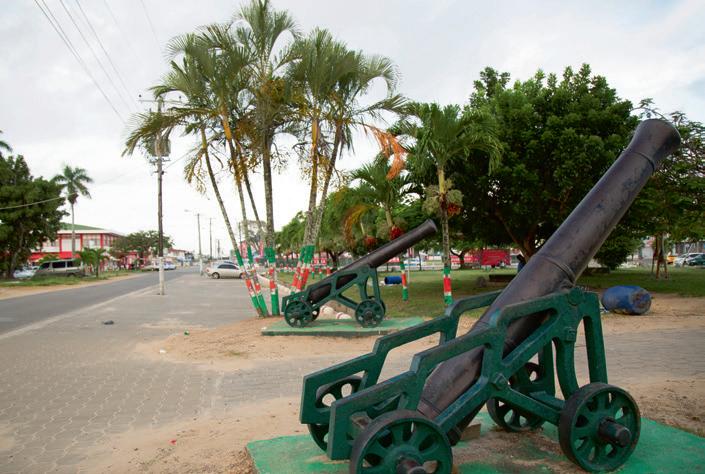
Strategically positioned in the center of the Suriname-Guyana Basin, it is envisaged that the deep-water port will be gateway to the Caribbean, northern Brazil, and wider Latin American markets and Atlantic markets.
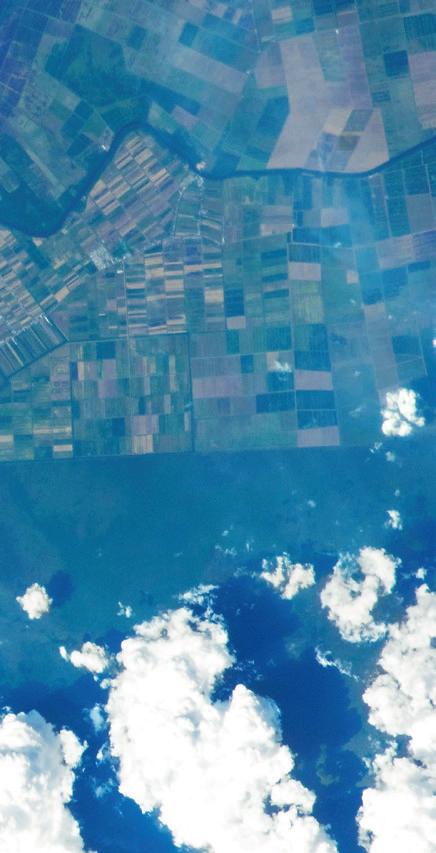
Nickerie is also close to the border with Guyana. The trans-border Canawaima ferry currently operates a daily service between Molson Creek in Guyana and nearby South Drain in Suriname, but there are plans for a bridge to replace the service. Guyana and Suriname recently signed a US$ 2 million contract for feasibility studies for a new Corantijn River bridge, which would have a 43-meter air draft. The Nickerie River may also require one or two new bridges to improve local connectivity.
UPGRADING THE EXISTING PORT
The existing port of Nickerie is owned and managed by HBS and enjoyed an upgrade in 2012 but has since remained somewhat under-utilized with only around 90 vessel calls annually. Currently the port of Nickerie, which is 11.8 km from the mouth of the Nickerie River, has, in theory, a draft of just 4.5 meters at low tide and can accommodate ships of 114 meters LOA or 6,000 DWT.
HBS confirms that Nickerie will be used as a base for the offshore project and that there is a separate plan to further upgrade its facilities. The Nickerie River, too, will be dredged to a depth of 7.5 meters.
21 www.caribbean-maritime.com
Some 1,500 hectares of state-owned land have been allocated to the project. This land will also be used for the sustainable development of trade, agriculture, production, and tourism”
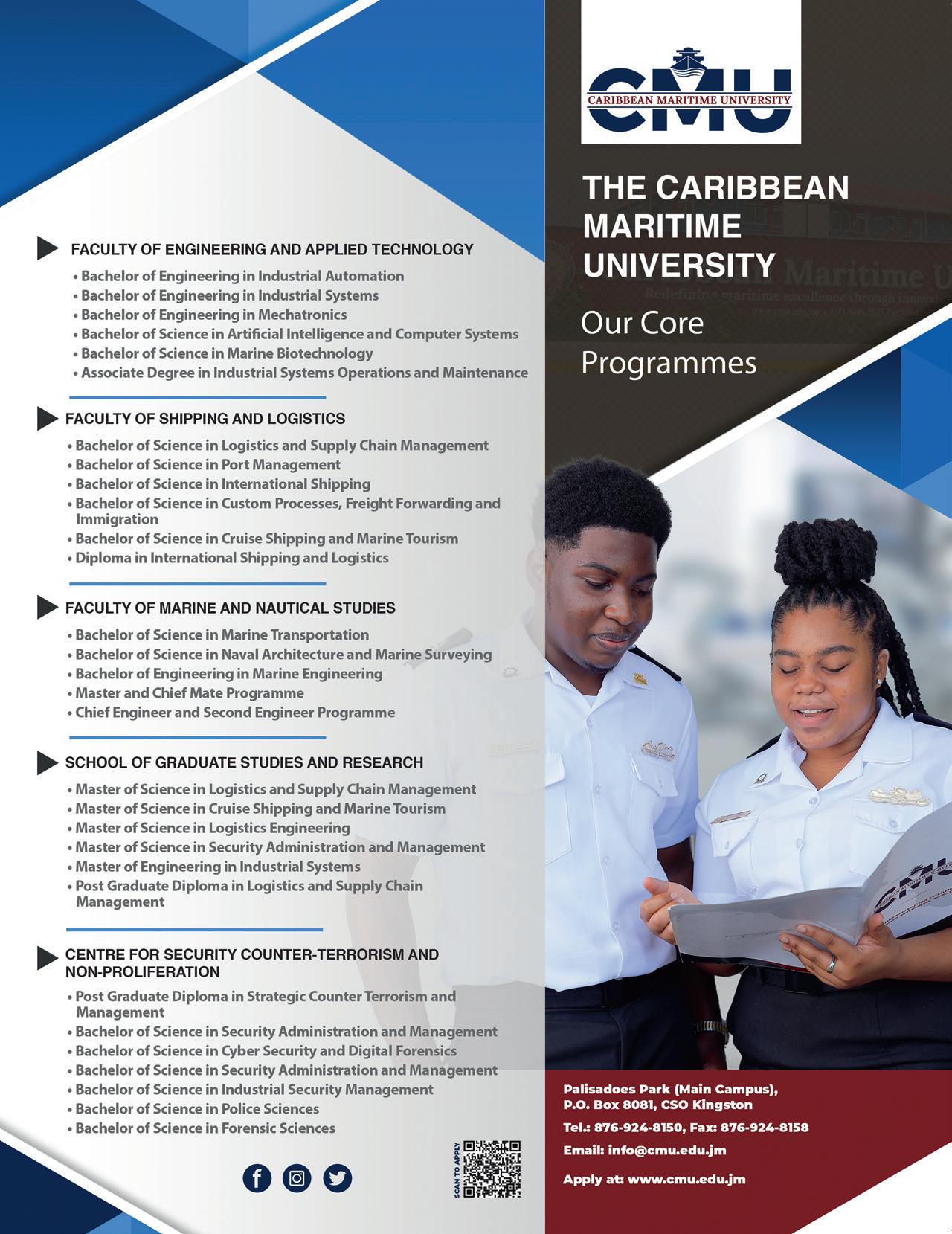
Poised for expansion
Who we are and what we have to offer
The Caribbean Maritime University (CMU) is the first specialized public University and the only International Maritime Organization (IMO) – recognized University in the English-speaking Caribbean.

23 www.caribbean-maritime.com THE CARIBBEAN MARITIME UNIVERSITY
THE CARIBBEAN MARITIME UNIVERSITY
By changing our status from The Caribbean Maritime Institute to The Caribbean Maritime University in 2017, we displayed our desire to expand. Our ISO 9001:2015 Quality Management System certification attests to our development towards being one of the top maritime universities in the world, backed by organizations such as the IMO and the ISO.

At the CMU, we do things differently. This is evident in our adoption of the Blue Ocean philosophy. It inspires our goal to redefine the boundaries of maritime education and training by integrating career technical education, life skills and academics into producing industry-ready graduates with global competence and certification for a changing workforce.
To serve our students and other stakeholders wholly and efficiently, we invest in technology and inspire innovation at every level of operation. As a result, we are the simulation hub of the Caribbean, hosting the most extensive suite of state-of-the-art training simulators, a center for research and consultancy in renewable energy and the world's largest and most sophisticated Authorized and Certified Training (FACT) Centre. Festo is a German engineering turnkey solution that provides worldclass training and global certification in mechatronics, automation, pneumatics and other industrial globally relevant specializations.
We are a global institution with a worldwide reach and a global outlook. We are continuously re-imaging success through increased synergetic alliances, upgrading technological resources and acquiring additional ones, and producing global conscience, industry-ready disciplined leaders.
Our History and Programs
The CMU has navigated a long journey from its inception on September 15, 1980, at 9 Norman Road in Kingston. It was then the Jamaica Maritime Training Institute (JMTI), – a joint project of Jamaica and Norway. The plan was to train 30 seafarers for the Jamaican Merchant Marine fleet.
By May 1984, the entire JMTI was in new buildings at the current location –Palisadoes Park near the Norman Manley International Airport in Kingston.
On January 4, 1993, the JMTI became the Jamaica Maritime Institute, JMI, as a statutory body under the laws of Jamaica.
The institute was now being fully
managed by the Jamaican Government with the first Jamaican-born Executive Director –Lieutenant Commander Michael Rodriguez. Later, when the JMI widened its focus beyond training seafarers and expanded to support the needs of the region, the name was changed to the Caribbean Maritime Institute under the CMI Act 2001.

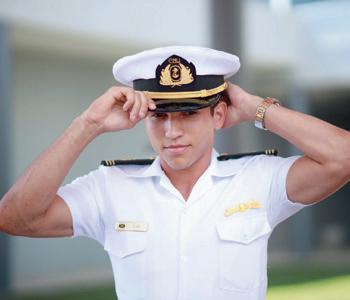
24 Caribbean Maritime | February-May 2023
Fast forward to Charter Day September 28, 2017, when the CMI, officially transitioned to university status.
That followed the passage of legislation in the Jamaican Parliament to grant the institution university status allowing it to confer degrees, awards, certificates, diplomas, and other academic distinctions.
Faculties, Centers and Schools
The CMU has three Faculties, one Center of Excellence that delivers programs as well as a School of Graduate Studies & Research.
5 Faculty of Marine & Nautical Studies
5 Faculty of Engineering & Applied Technology
5 Faculty of Shipping & Logistics
5 Centre for Security, Counter-Terrorism, and Non-Proliferation
5 School of Graduate Studies & Research
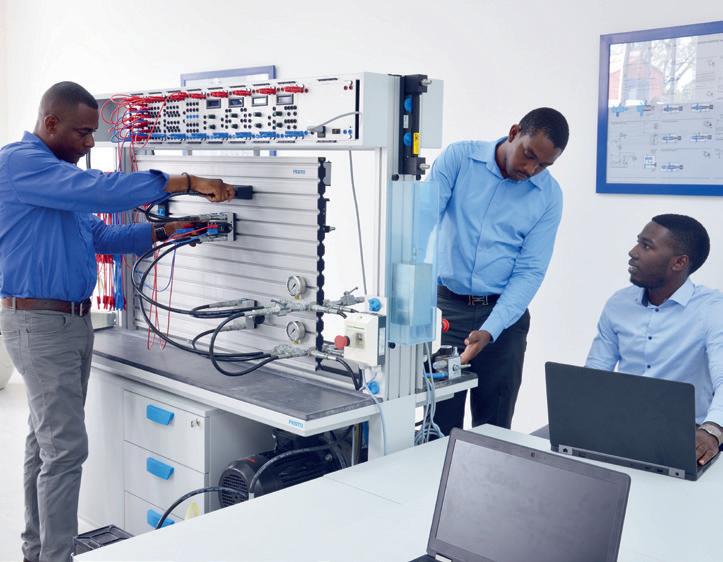
Meet our new President
Professor Andrew Spencer joined the Caribbean Maritime University as President on September 12, 2022.
Professor Spencer has served in executive leadership in academia and corporate entities across the Caribbean. He was most recently Professor and Deputy Executive Director at the Mona School of Business and Management at the University of the West Indies (UWI), Mona, with responsibility for all undergraduate programs.

He was the first to be promoted to the rank of full professor in the substantive field of tourism at UWI.

Professor Spencer served for four years as the Executive Director of the Tourism Product Development Company (TPDCo), the agency responsible for the maintenance, development and enhancement of the tourism product in Jamaica, and the largest agency in the Ministry of Tourism.
He also gave stellar service from 2013 to 2017, as the Director of the Centre for Hotel and Tourism Management (CHTM), University of the West Indies, Nassau.
He holds a BSc and MSc in Tourism Management from the University of the West Indies and was awarded his PhD in Tourism Strategy from Bournemouth University in the UK.
His PhD thesis was awarded the Institute for Travel & Tourism (ITT) PhD Student of the Year- 2011/2012 award, by the ITT Education and Training Committee, in the UK.
Professor Spencer’s research record demonstrates over 50 scholarly publications, including three authored books with top international publishers.
Professor Spencer has consulted extensively with Caribbean nations on issues related to tourism development. He has also chaired and been a member of 12 public boards in Jamaica.
At present, he chairs the Governance Committee of the University Council of Jamaica, the Development Committee at the National Education Trust, the
Audit Committee at the Airports Authority of Jamaica, the University of the Commonwealth Caribbean’s Tourism Advisory Board and the Mona Inn and Conference Centre Ltd at the UWI.
A Sea of Opportunity
Consider this: over 80% of global goods are carried over the waves. In 2021 alone, the value of global trade reached a record US$ 28.5 trillion. In other words, that trade is a multi-trillion-dollar opportunity to transform the lives of people, communities, our country and our region – a sea of opportunity.
To tap into this vast sea, the CMU outputs graduates each year that meet
25 www.caribbean-maritime.com
Professor Spencer’s research record demonstrates over 50 scholarly publications, including three authored books with top international publishers”
industry standards and practices. In 2022, over 600 individuals graduated from the Faculty of Marine & Nautical Studies, the Faculty of Shipping & Logistics, the Faculty of Engineering & Applied Technology, the Centre for Security, Counter-terrorism and Non-Proliferation and the School of Graduate Studies.
When people hear the word maritime, they often think of shipping, the sea, or perhaps seafarers. However, the maritime trade demands a range of professionals. So, in addition to seafarers, our graduates included logisticians, customs and immigration officials, cyber-security experts, engineers, and many other professionals.
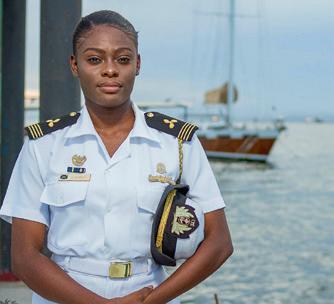
The ceremony was special because it included our first-ever batch of engineering graduates in Industrial Automation and Mechatronics – two major fields shaping the world today.
Competing in the Skills Olympics
First-Ever Mechatronics and Industrial Automation Graduates
“If you’re not familiar with terms such as industrial automation, 3D printing, and mechatronics, you may think it has nothing to do with you. But the world as we know it is being changed by a wave of emerging systems and technologies - many of which we already use in our daily lives.”
Dr. Dave Muir
Principal Lecturer, Faculty of Engineering & Applied Technology. Adjunct Faculty, Faculty of Marine & Nautical Studies.

THE FOURTH INDUSTRIAL REVOLUTION
This is an exciting time for us at CMU. The first batch of Mechatronics and Industrial Automation students have graduated. In an era of digital transformation with automation as a central theme, these programs are part of the future as we build capacity in Jamaica and the region to meet the demands of the fourth industrial revolution.
The Festo lab at the CMU in combination with our shipping simulators presents significant opportunities as our capital infrastructure is already on the ground ready to be proposed for existing challenges in local manufacturing etc.
Festo is an international automation company with over 20000 employees in 61 different countries. This Festo FACT (Festo Authorized and Certified Training) center is the largest center of its kind on this side of the world focusing on all aspects of Automation and Industry 4.0 technologies. Its potential has already been felt as the CMU and HEART facilitated Jamaica’s first-time entry to competitions for Mechatronics and Mobile Robotics at the World Skills Competition in Russia 2019, trained by local experts Shane Kentish and Dave Muir. This is participation at the highest levels in the ‘Skills Olympics’ of the world. Components of these programs were already embedded in the flagship Industrial Systems degree. Other skill competition areas were welding and computer-aided design. This perfor-
mance continued as in October 2022, the same student mobile robotics competitor, Dihanroy Mitchell, now served as an expert and took on new students who represented us in the World Skills 2022 special edition in France. Jamaica competed against major industrialized countries and did fairly well on both occasions as a firsttime entrant.
These competitions include related technologies such as the Internet of Things (IoT) which can be highly beneficial as it enables significant growth in predictive maintenance, and improvement in asset tracking and accordingly helps to achieve enhanced customer satisfaction and customization. Other areas include Sensor Networks, Cloud Computing, Big Data Analytics, Communications, and Embedded Systems. These are the core technologies for industries we rely on every day.
To play a more significant role in this digital future, the CMU should be supported to build on this work. The university has the largest 3D printing facility in the Caribbean, advanced simulators for maritime training, cranes, trailers, etc. These are all a part of the cutting-edge infrastructure at hand. The Festo Centre has a dedicated Industry 4.0 lab with Industrial and mobile robots. These form part of a complete cyber-physical system which is a testbed for the smart factory of the present.
Dr Dave Muir
26 Caribbean Maritime | February-May 2023
Get in touch with the CMU The Caribbean Maritime University Email: info@cmu.edu.jm; 876-924-8150 www.cmu.edu.jm THE CARIBBEAN MARITIME UNIVERSITY
Maritime women shine
at CMU’s 2022 Industry Conference
Several women presented cutting-edge research at CMU's 2022 Industry Conference. The Conference, held 29-30 September, was the highlight of World Maritime week for the University. Conference 2022 was convened under the theme, “End-to-End Logistics: Opportunities in an Era of Uncertainty.”
With only 2% of the maritime workforce being women, this is still a heavily male-dominated sector. However, the International Maritime Organization (IMO) has been spearheading efforts to help the industry move forward and help women achieve a representation that is in keeping with 21st-century expectations.
At the Industry Conference, women presented topics such as Risk and Vulnerability in the Supply Chain, Maritime Education and Training, Technology and Modernization, Security and the Maritime Industry, and The Future of The Cruise Industry Post Covid. The topics posited the challenges faced by the industry, and the presenters gave solutions to each area.
WiMAC and CSA sign MoU
A Memorandum of Understanding was signed between the Women in Maritime Association, Caribbean (WiMAC) and the Caribbean Shipping Association (CSA) during the CSA’s Annual General Meeting, Conference and Exhibition in San Juan, Puerto Rico on 2nd November.

The historic signing of the two-year agreement followed a panel where
WiMAC’s President, Tamara Lowe, engaged in a discussion with her fellow panelists on mentorship of women in maritime sector exploring how men can counsel and support equal opportunities for women in an industry where they are underrepresented. Ms Lowe reflects on the note that our male allies are welcome to join WiMAC
as Associate members.
The two organizations committed to partner and undertake joint activities to address issues in the maritime sector, collaborate on training efforts and provide support on projects related to access to research data and publications among other things.
27 www.caribbean-maritime.com WiMAC WOMEN IN MARITIME ASSOCIATION CARIBBEAN
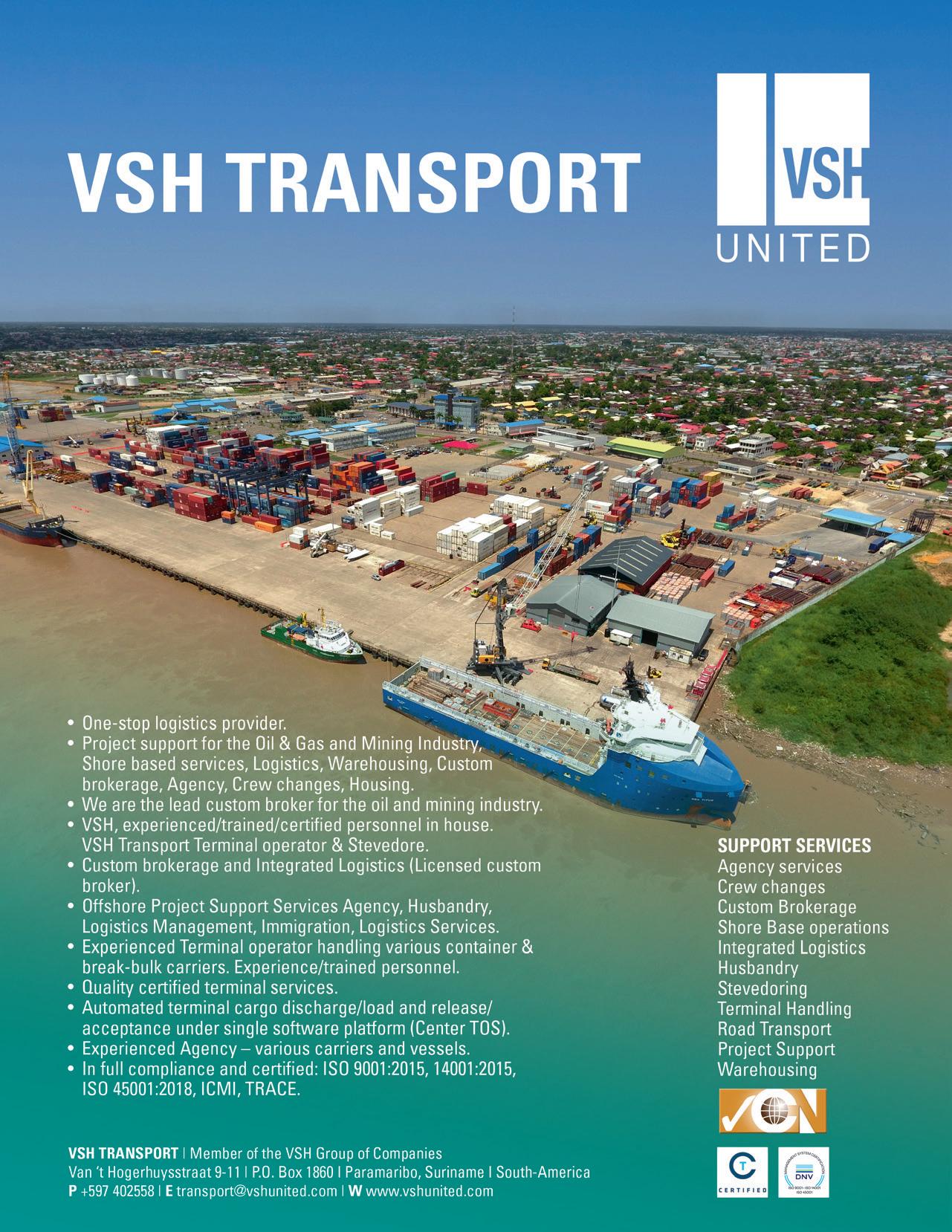
WiMAC Profiles
Dr Evette Smith Johnson
Dr Evette Smith Johnson is a veteran educator and seasoned maritime education and training (MET) professional. Dr Johnson served in the secondary education sector in Jamaica for a decade before joining the Caribbean Maritime University (CMU) as Academic Administrator in August 2007. She is currently Director of Graduate Studies and Research at the CMU.
She holds a PhD in Education with specialization in Curriculum and Instruction from Northern Caribbean University, Jamaica. She has published both scholarly and creative work.
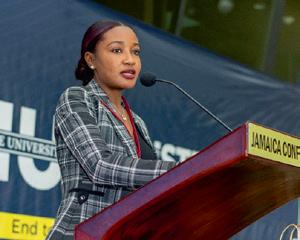
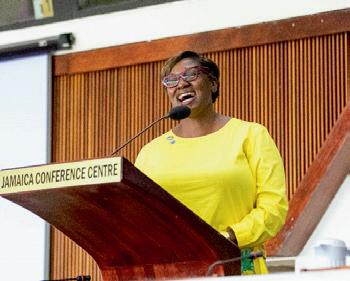
Her passion is the development of people through education, training, and mentorship. She enjoys volunteering on projects that promote the development and education of young people. Her ‘super power’ lies in her ability to plan projects and successfully mobilize teams to execute them.
Evette is married to Christopher and together they share the joy of raising their son Christopher.

Senior Superintendent of Police (SSP), Stephanie Lindsay, head of the Jamaica Constabulary Force (JCF) Corporate Communications Unit (CCU), presenting on the crime statistics in the Jamaican Maritime Industry.
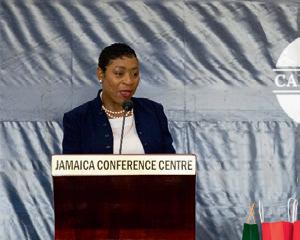
Ms Sandra Casanova, President of Martinique’s Cluster Gat Caraïbes Logistics and Transport has a light moment with her colleague.
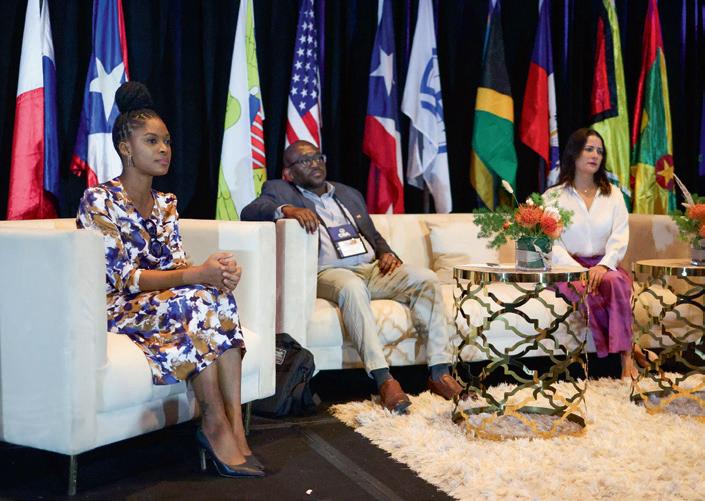
Natola Meredith, Director, Towing Operations, Port of Kingston at Ocean J Towing, presenting on the impact of Covid-19 on the cruise industry.
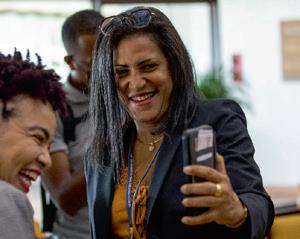
29 www.caribbean-maritime.com WiMAC WOMEN IN MARITIME ASSOCIATION
CARIBBEAN
Stephanie Lindsay
Sandra Casanova
Natola Meredith


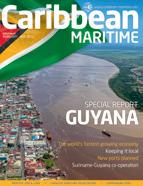
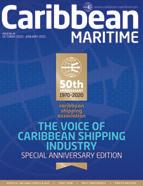
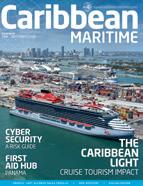



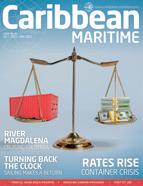

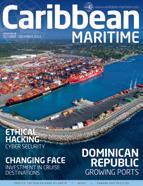
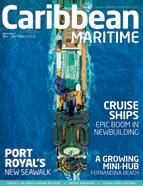
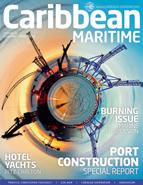
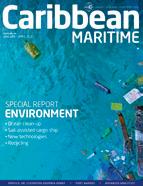
issues of Caribbean
magazine
mobile,
and
qrs.ly/mdbz822
View all back
Maritime
on
tablet
desktop
First in-person AGM in three years
For the first time in three years, the Caribbean Shipping Association (CSA) was able to hold an in-person Annual General Meeting, Conference and Exhibition when members and others gathered in San Juan, Puerto Rico in late October at the Sheraton Puerto Rico Hotel & Casino.
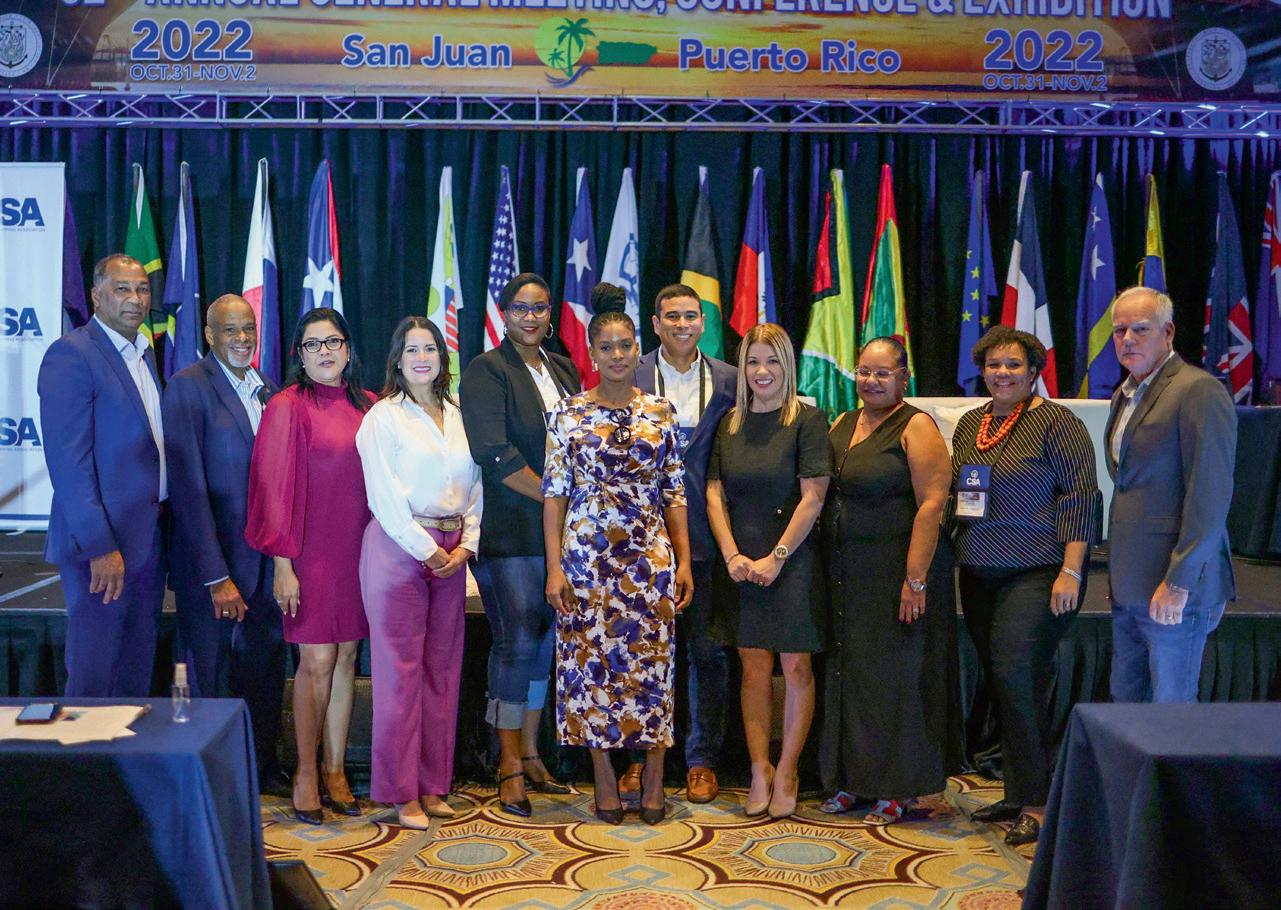
The 2020 and 2021 AGMs were held virtually due to the travel restrictions created by the Covid-19 pandemic, but the meeting in San Juan, brilliantly organized by the Puerto Rico Shipping Association (PRSA), proved that there is no substitute for personal interaction and for making and renewing contacts and acquaintances.

Not only was the conference and exhibition a tremendous success but so were the many events arranged by the PRSA.

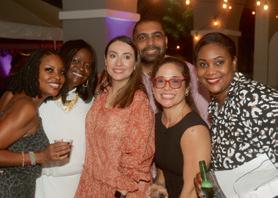

31 www.caribbean-maritime.com THE 52ND CSA AGM SAN JUAN, PUERTO RICO


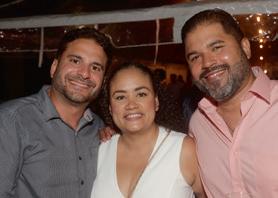








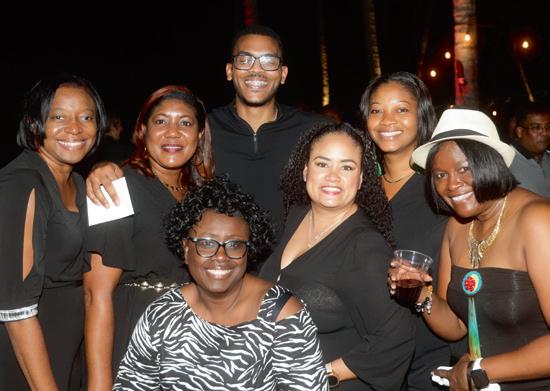


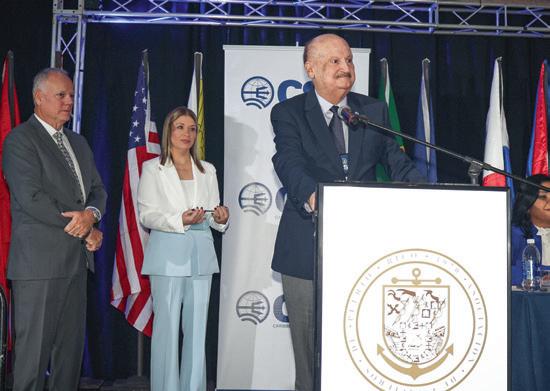
32 THE 52ND CSA AGM SAN JUAN, PUERTO
Caribbean Maritime | February-May 2023
RICO



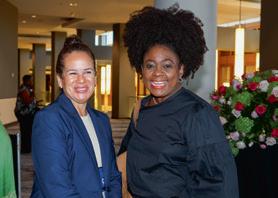





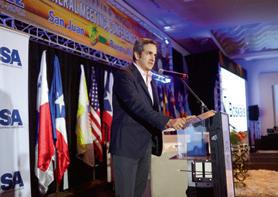
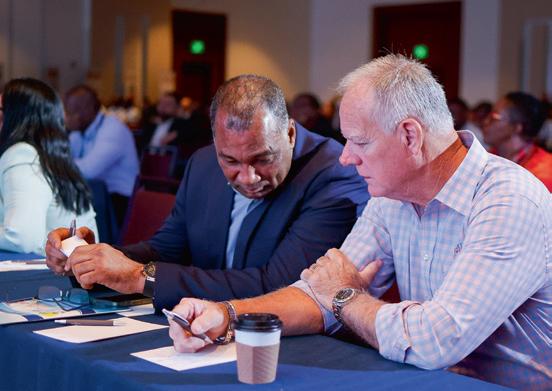
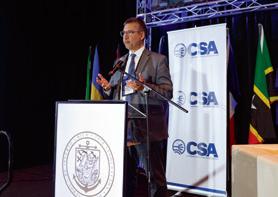
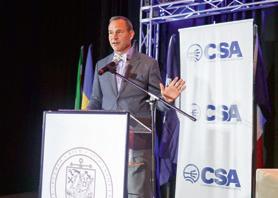

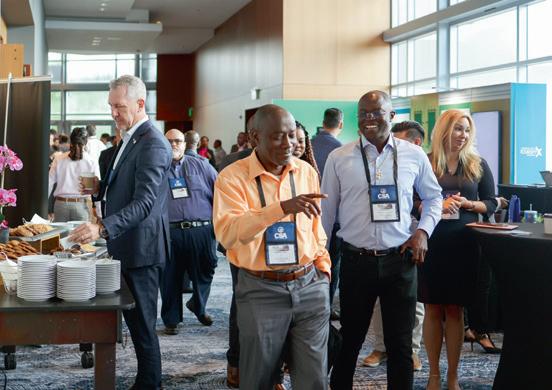

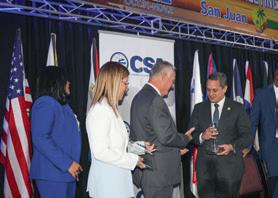
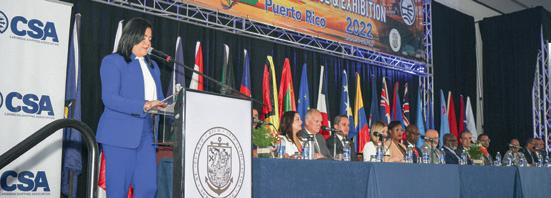
33 www.caribbean-maritime.com
THE 52ND CSA AGM SAN JUAN, PUERTO RICO
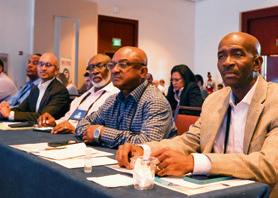
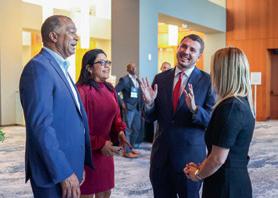
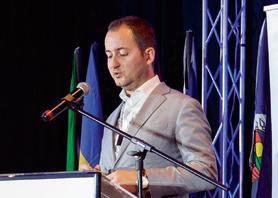

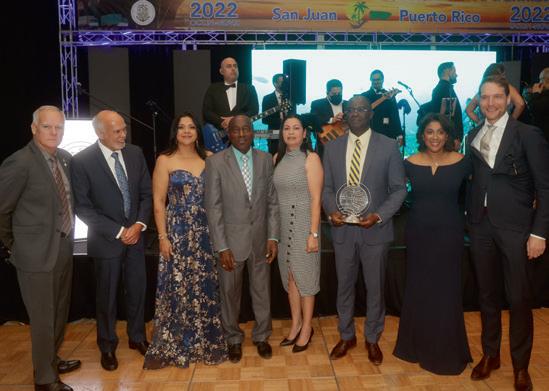

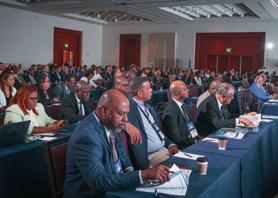
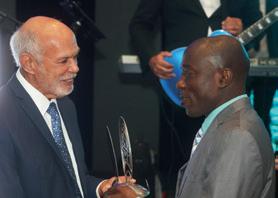

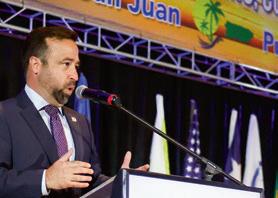

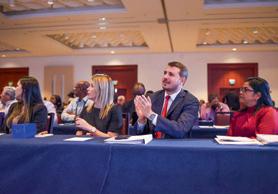

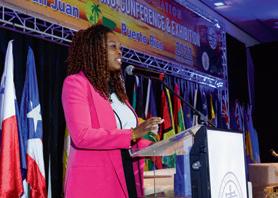
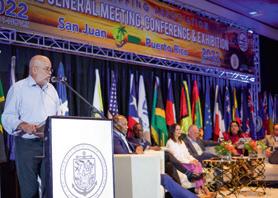

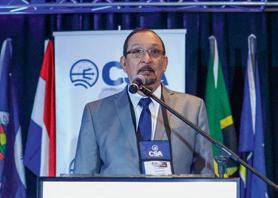

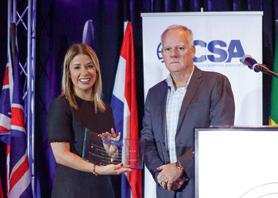
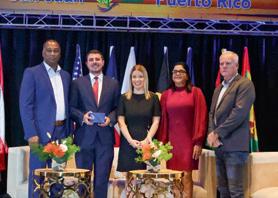
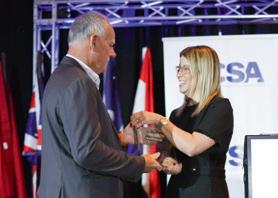

34 Caribbean Maritime | February-May 2023
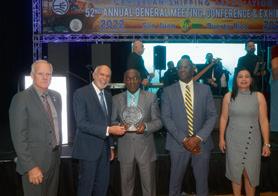

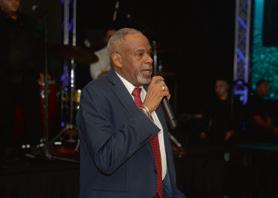
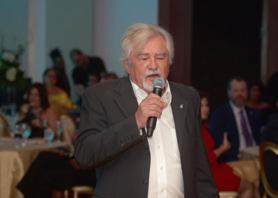




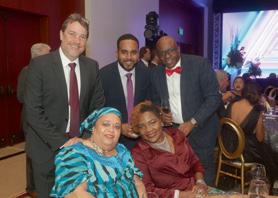


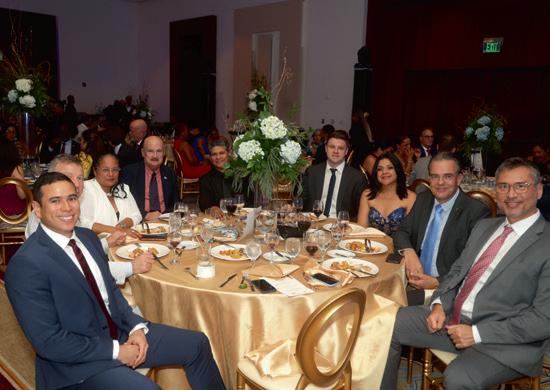
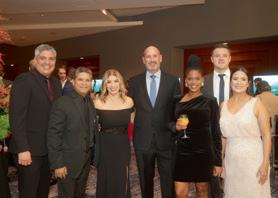

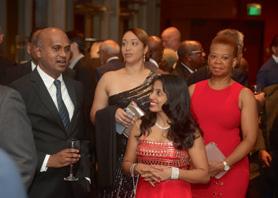
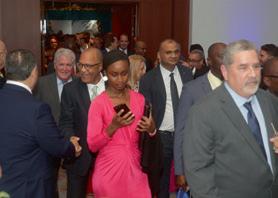




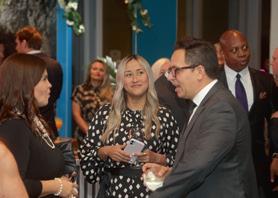

News from around the Caribbean Suriname
Boskalis, in a joint venture with Sliedrecht-based Baggerbedrijf De Boer - Dutch Dredging, has been awarded a contract to further deepen a 68-km-long stretch of the Suriname River. The joint venture will also be responsible to keep the river at a required depth during the following two years.

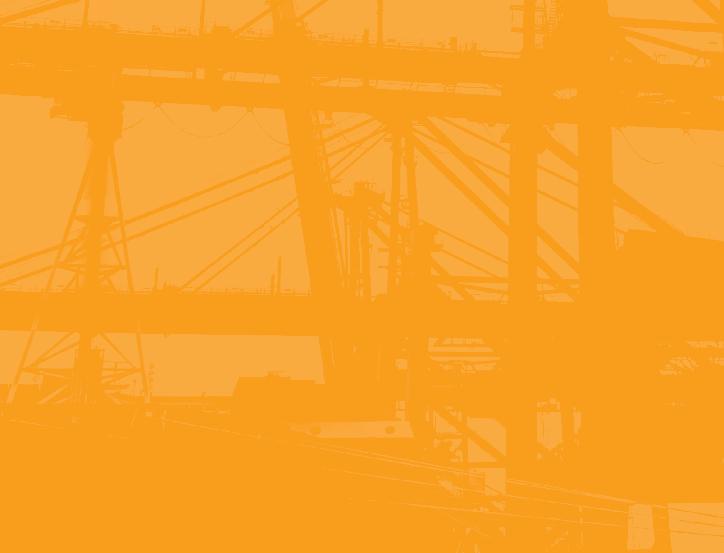
The same joint venture also carried out the initial capital dredging in 2021 during which the same part of the river was deepened. The Suriname River offers ships access to the port of Paramaribo and its and other terminals.
With this dredging project, Suriname aims to make the port more accessible to larger vessels from container, and oil and gas companies. At high tide, vessels with a depth of more than 7 meters will be able to pass when the dredging is complete.
Caribbean Maritime
roundup
Jamaica
Two of Jamaica's largest conglomerates, Jamaica Producers Group (JP) and PanJam Investment (PanJam), are merging to create a group worth over J$100 billion in assets.
JP was founded as a co-operative of banana growers over 90 years ago. Over the decades it emerged as a group that owns food and juice brands along with logistics and shipping services.
PanJam, formed some 60 years ago, builds and operates commercial real estate but also holds private equity investments.


This arrangement will result in PanJam acquiring JP's operating assets in exchange for JP taking a 34.5 per cent interest in PanJam. The transaction is expected to be
Florida
Port Canaveral has acquired a new LHM 600 which is part of Liebherr’s latest mobile harbour crane generation. The crane is due for delivery in December 2023.
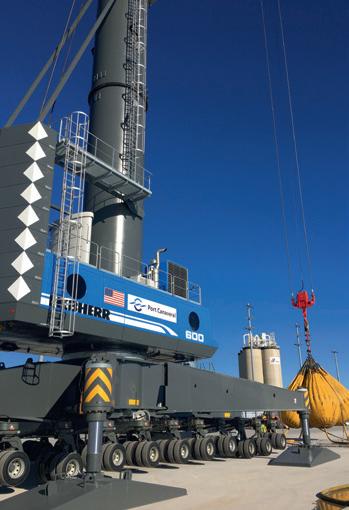
Port Canaveral entered their first LHM 600 into service in February 2019.
The LHM 600, with a lifting capacity of 154 tons, will be based on the updated generation of Liebherr mobile harbour cranes. Digital enhancements, a modernised cabin, and improved lifting height are among the crane’s benefits.
completed within the first quarter of 2023.
The expanded Pan Jamaica Group will be led by JP's current CEO, Jeffrey Hall, who will hold the position of CEO and Executive Vice Chairman of the Board of Directors.
PanJam's current CEO, Joanna Banks, will hold the position of President of Pan Jamaica Group.
Stephen Facey will serve as Chairman of the Group's Board, which will include directors from both JP and PanJam.
Charles Johnston, JP's Chairman, Jeffrey Hall and Alan Buckland, JP's current Chief Financial Officer, are expected to join the Group's Board.
Venezuela
Project cargo specialist Intermarine has over three decades of experience working in Venezuela. Intermarine's liner services regularly call at the ports of Maracaibo, Guaranao, Puerto Cabello, and Guanta.
More recently, Intermarine has included the Lake Maracaibo port of El Tablazo, and Matanzas, on the Orinoco River. Intermarine says it is using its extensive Venezuelan network and knowledge of the port conditions to offer its customers the highest level of service.
36 Caribbean Maritime | February-May 2023
©
Liebherr
A Liebherr LHM 600
Sint Maarten
Port St. Maarten Group (PSG) has ordered a state-of-the-art Gottwald Mobile Crane.
PSG’s cargo section will receive the US$4.6 million Gottwald Mobile Harbor Crane ESP 7 from manufacturer Konecranes, a world-leading Lifting Business group, that will further improve and enhance operational excellence in preparation for more business opportunities at the Captain David Cargo Quay and Terminal.
The ESP 7 Konecranes Gottwald Mobile Harbor Cranes are designed for cargo handling to serve vessels up to post-Panamax class. The crane has a working radius of up to 51 m, lifting capacities of up to 125 tons and lifting speeds of up to 120 m/min.

The new crane will allow PSG to better serve its clients based on its commitment towards operational excellence and to continue to position PSG with expanding its footprint within the cargo industry.
Currently two Gottwald Cranes, models HMK 260E and MKH 6507 continue to operate at the cargo terminal.
Port St. Maarten serves the islands of Saba, Sint Eustatius, St Barths, Anguilla, Montserrat, St Kitts & Nevis, and Antigua and Barbuda.
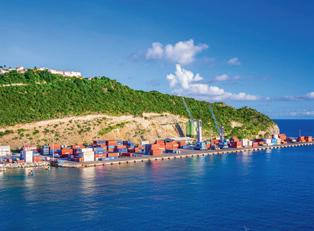
Venezuela
After more than 25 years suspended or paralyzed, Servicios Navieros Integrales (Senainca) – in alliance with public and private companies – has launched a Venezuela cabotage service. The new service is operating between the ports of Puerto Cabello, La Guaira, Cumaná and Guamache offering the transit or trans-shipment of cargo between those ports.
Senainca was founded in 2012 and is wholly Venezuelan owned. Aside from the new coastal service, the company also acts as a shipping agent in La Guaira, and in association with partners in Guanta and Puerto Cabello, and plans to expand operations to Las Piedras.

CSA
Delegates and members donated an incredible US$ 92,821 last October at the Caribbean Shipping Association (CSA) Annual General Meeting, Conference and Exhibition in San Juan, Puerto Rico
These generous pledges will go towards the CSA's Training Trust Fund which is used for training and development courses and workshops and to fund scholarships for students at the region's maritime institutions.

The CSA looks forward to the roll-out of its upcoming programs and

initiatives, and the continued support of its members. The CSA would like to say: Thank you all!

37 www.caribbean-maritime.com
Port Sint Maarten
Haboco / Shutterstock.com
Puerto Cabello
testing / Shutterstock.com
roundup

Jamaica
Interceptor 011 has just been deployed in Kingston Harbour, Jamaica, to block trash from entering the Caribbean Sea. This is the 4th Interceptor Barrier we have deployed in Jamaica, with the support of GraceKennedy Ltd. and Clean Harbours Jamaica.
News from around the Caribbean
Panama
Damen Shipyards Group (DSG) has added a new service hub in the Americas. With two already up and running in Canada and Brazil, DSG now has a third in Panama City to serve Central America and the Caribbean.
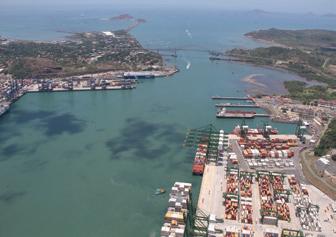

Martinique
Grand Port Maritime de Martinique has a new tug. It was delivered in January and is believed to be the most powerful of its kind in the Caribbean and in France.
Private local operator Société Maritime de Remorquage et d’Assistance (SOMARA) ordered the EUR 8 million tug to increase capacity in Fort-de-France. An investment made possible thanks to public aid from the State and the European Regional Development Fund.
Besides harbor work and terminal operations, SOMARA is involved in a range of marine activities, including barge transport, and environmental work.

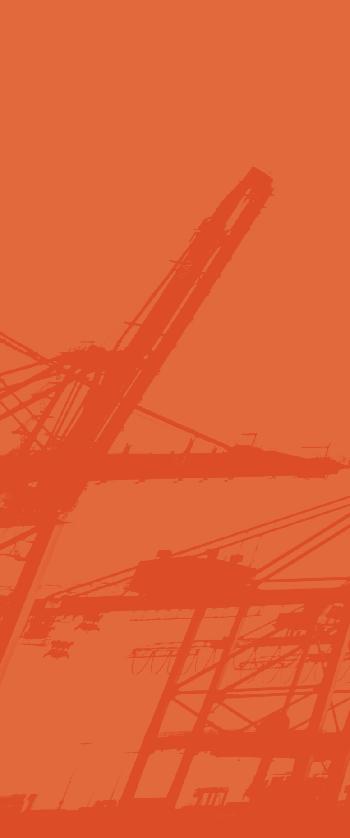
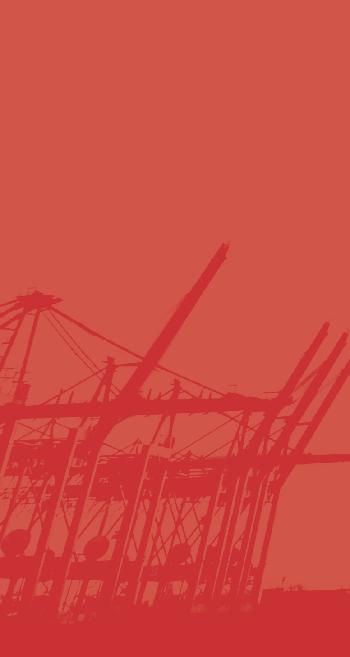

Damen Service Hubs provide customer support for both Damenbuilt and third-party vessels. This involves delivering a full range of services including warranty support, parts sales, technical assistance, docking assistance and services acquisition. The core team in each hub is headed up by an account manager, with a project engineer handling warranty and technical assistance, and a parts sales engineer who ensures that customers have everything they need to keep their vessels working smoothly.
As with all Damen’s Service Hubs, the
Venezuela
More good news for Venezuela. On 3 January, Venezuela received its first European cruiseship in 15 years – albeit not the mainland. The 1991-built, Bahamas-flagged cruise ship Amadea called at Margarita Island with approximately 500 passengers on board.
The ship is owned by Amadea Shipping and chartered by Germany’s Phoenix Reisen.
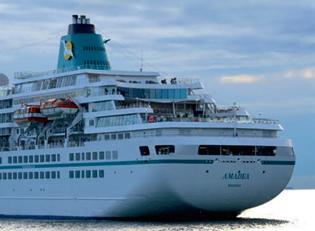
Panama location will be supported by the Damen organization in the Netherlands.

Positioned at the Pacific end of the Panama Canal, one of the world’s busiest and most important waterways with over 1,000 transits each month, Damen’s new service hub is ideally positioned and well equipped to support a network of field service engineers delivering maintenance and warranty services to Damen customers across the Caribbean and Central America.
Florida
Port Everglades is celebrating one of the largest grants in its history. This grant will be used to bolster infrastructure to combat sea level rise and to accommodate larger vessels. The Port thanked US Rep. Debbie Wasserman Schultz, the Broward County Government, and local Mayor Lamar Fisher and for their support in obtaining the grant.
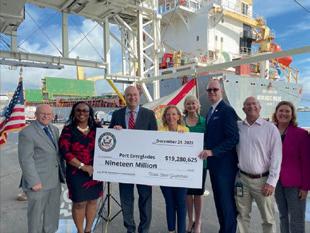
38 Caribbean Maritime | February-May 2023
Interceptor Barrier
Margarita
Port Everglades
Caribbean Maritime
Fort-de-France
/ Shutterstock.com
/
Panama Canal, Pacific
Haboco
byvalet
Shutterstock.com
Guyana
A US$ 1.38 billion contract was awarded by the Guyana government to Dutch firm Koole which provides international industrial and maritime services and solutions for the removal of submerged wrecks and obstructions throughout the country.
The Ministry of Public Works says the “safety and security on our waterways are of paramount importance to the Government of Guyana”.
The wreck removal project is expected to take eight months and will cover the entrances to the Demerara, Berbice, Pomeroon, Waini and Essequibo rivers, as well as off the coast of Guyana.

Minister of Public Works Juan Edghill
Guyana
Vreed-en-Hoop Shore Base Inc (VEHSI) has started the new year with the emergence of the first part of its artificial island in the Demerara River. The consortium managing the project hailed this as a momentous achievement and a first for Guyana.
VEHSI is a joint venture between NRG Holdings Inc. – a 100 percent Guyanese-owned consortium that is the majority shareholder – and Luxembourg-headquartered Jan De Nul.



This new island is part of the reclaimed land that will be transformed into the estimated 18-hectare mega-project to create a new shorebase and port facility. This facility will form part of the US$ 300 million Port of Vreed-en-Hoop project.
The project is currently in the sandkey reclamation phase. During this phase, the dredger, Galileo Galilei, will continue the process of adding reclaimed material for the creation
says: “The country is advancing and it is, therefore necessary for us to make our waterways safer for ships by removing these 17 wrecks quickly and efficiently.”
Director General of MARAD, Captain Stephen Thomas, noted that some of the wrecks to be cleared had existed since the mid-1900s. The clearance of these wrecks, along with the three that were cleared earlier this year by Koole will allow the country’s ports to be less of a risk to shipping and reduce insurance costs.
The removal of these wrecks is key to port development in Guyana, in particular, the Vreed-en-Hoop port and the gas to energy projects.
Guyane
The future ro-ro sail-assisted vessel ‘Canopy’ (see previous issues of Caribbean Maritime) is on its way to Kourou.

The revolutionary vessel left the French port of Nantes-SaintNazaire in early January on its maiden voyage to the port of Pariacabo, in Kourou, French Guiana/Guyane.
of the artificial island on which the construction of the new terminal will be situated.
Phase one of the project is meant to be the special purpose vehicle to serve as a SURF (Subsea Umbilicals, Riser and Flowlines) Shorebase for Esso Exploration and Production
Guyana (EEPGL) projects.
The project started the first step in June, which entailed the dredging of the access channel in the Demerara River including the deepening/widening of the existing nautical channel, berth pockets, and turning basin.
39 www.caribbean-maritime.com
Canopy
Demerara River
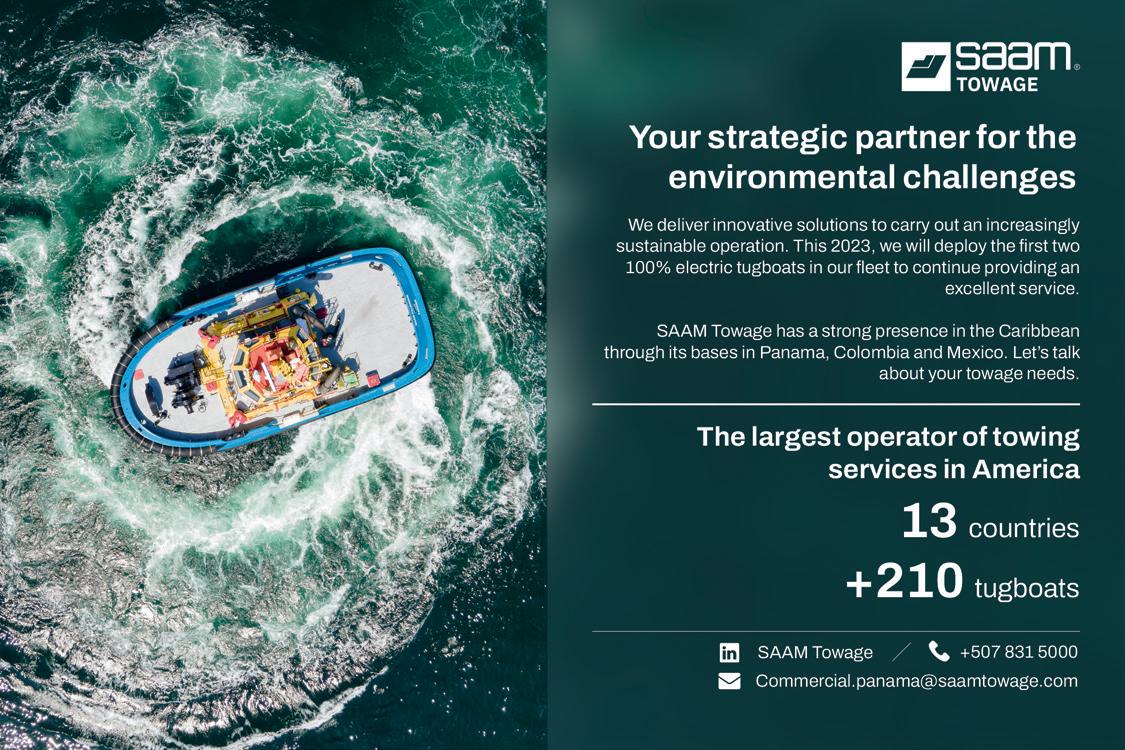
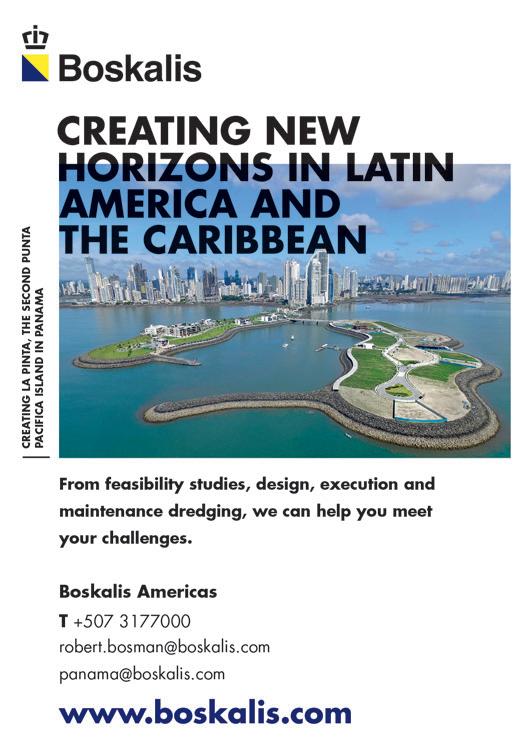
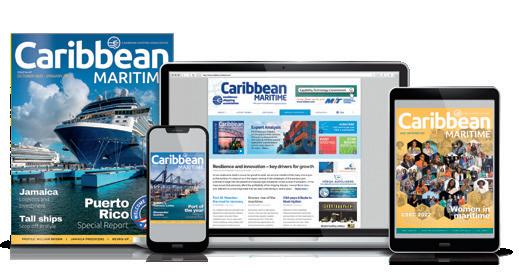
Stay up-to-date with Caribbean Maritime online, official journal of the CSA, download from www.caribbean-maritime.com, read on mobile or tablet and keep in touch on social media. CaribbeanMaritimeMagazine cm_magazine @caribbeanmaritimemagazine www.caribbean-maritime.com FOLLOW US ONLINE
Trinidad & Tobago

The Port of Galeota (PoG)Greening Project will during Q1 this year implement several recommendations from a recently completed Carbon Emission Assessment Report.
The Report was delivered by the Caribbean Industrial Research Institute (CARIRI) in December and contained energy-saving opportunities and greenhouse gas emission reduction projects that can be implemented at the Port, in the short, medium, and long terms.
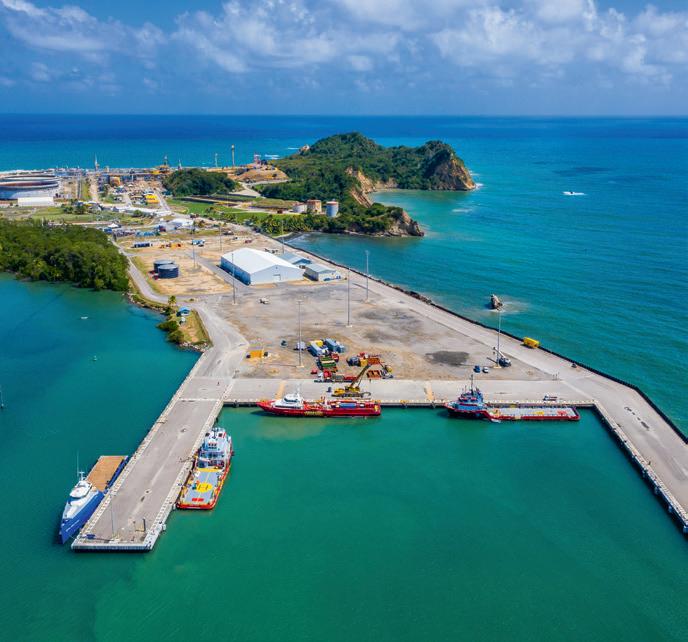
The Energy and Carbon Emission Assessment began in August 2022 and included the surveying and assessment of existing infrastructure and equipment at the port to determine their energy consumption patterns and carbon footprint.
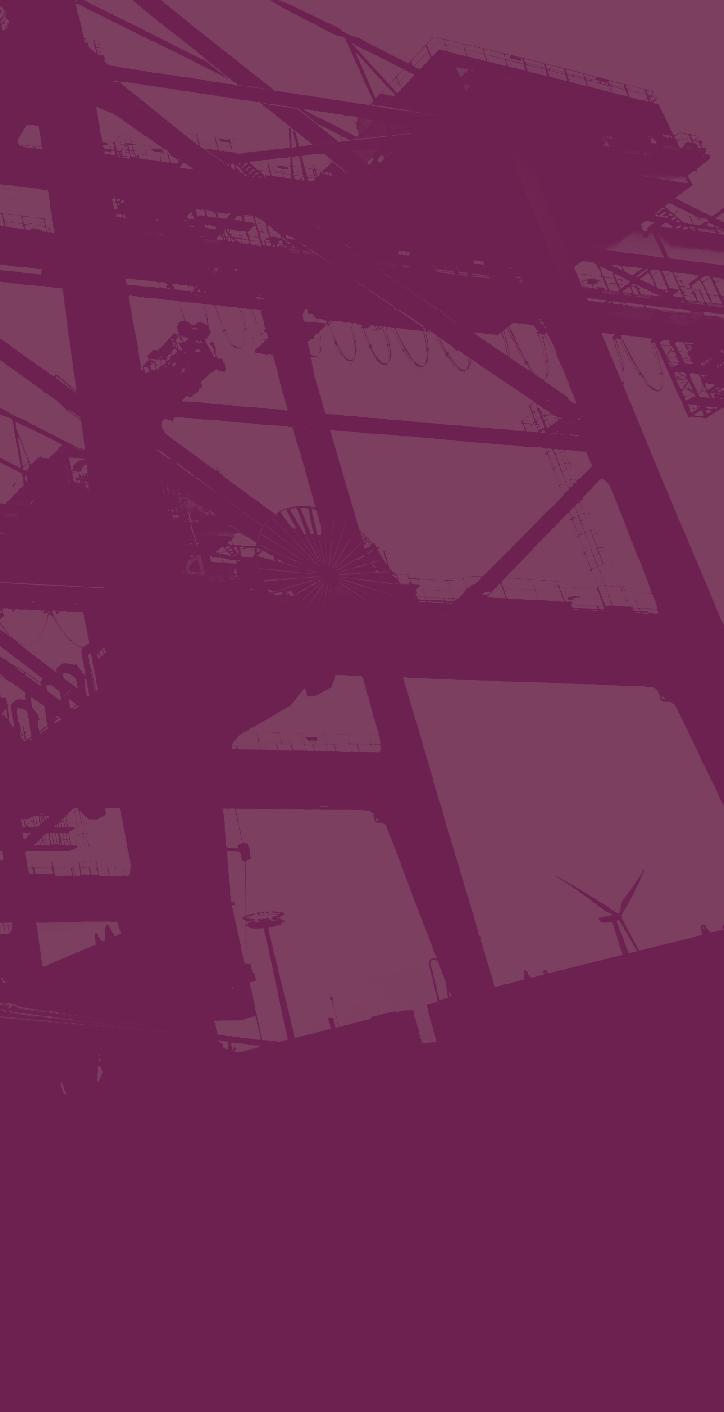
In order to implement a comprehensive energy/carbon management
Guyana
Rotterdam-based Vertraco Shipping is expanding its service to Guyana. Due to the high demand for breakbulk, containers and project cargo, the service of the Europe Caribbean Line now sails weekly to the port of Georgetown, instead of once every two weeks.
There are two European loading ports for the Caribbean: Vlissingen and Dover. From Dover the transit time is 17 days and from Vlissingen the voyage is 15 days.
The Bahamas
system at PoG, two studies were conducted:
• An energy assessment and

• A greenhouse Gas/Carbon Footprint Inventory
A base year of 2019 was used for both studies as this was the last year of normal operations before the Covid-19 pandemic.
• Port of Galeota is located on the south-eastern tip of , near the village of Guayaguayare. The Port is managed by National Energy and comprises five berths: Berths 1, 2, 3 with lengths overall of 104 meters, 147 meters and 104 meters respectively and Berths 4 and 5 which comprise an LOA 75 meters and 65 meters respectively.
Cruise travelers will soon have a new destination to explore in The Bahamas, after Azul Destinations broke ground in December on Calypso Cove for a new US$ 250 million resort and cruise port on Long Island. Expected to be completed over two years, the new port will be able to accommodate the world’s largest cruise ships.
The development project is expected to employ 300 people during the construction phase, and many more will be employed once the facilities open. The project is being undertaken by a consortium of Brazil’s Azul Destinations and independent developer Calypso Cove Destinations. Calypso Cove will not only feature a cruise berth but also a variety of other attractions.
Long Island is considered the most scenic island in The Bahamas, making it a highly desirable destination for cruise passengers. With a population of just over 3,000 residents, the 130 km length island has plenty of unspoiled places.
41 www.caribbean-maritime.com News from around the Caribbean roundup Caribbean Maritime
Port of Galeota
Nicaragua/Dominican Republic
Located on Nicaragua's Caribbean coast, Puerto El Bluff is owned and operated by Nicaragua's port authority, Empresa Portuaria Nacional (EPN). In 2007, the company launched a plan to improve
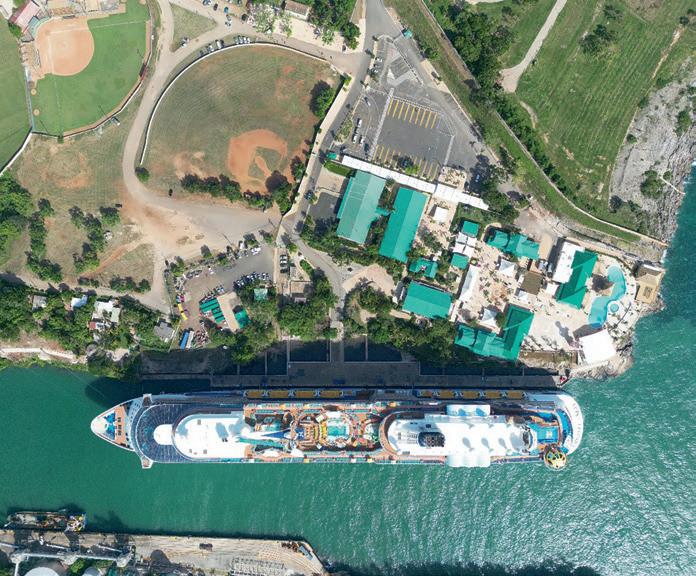
navigational conditions in the region that included the replacement of the wooden berthing structure at El Bluff, which posed a problem for ships, with a new dolphin solution made of steel.
Dominican Republic
After 10 years of revisions, on January 19th, 2023, the Dominican Republic government has finally approved the Maritime Commercial Law.
E&M International Consulting played a vital role in the preparation of the law, with President, Lludelis Espinal (Judy) appointed in 2013 by the National Congress and the National Authority of Maritime Affairs (ANAMAR) to review a document prepared by experts appointed by the International Maritime Organization as part of a scheme originally used by Central
America countries to modernize their maritime legislations.
Mrs Espinal, reviewed, amended and actualized the document preparing a bill based on the most modern international maritime conventions following national legal system.

It is important to note that during the process of discussion and review of the bill at the National Congress, wherein public and private sectors presented their opinions and suggestions, E&M staff members Esteban Mejía, Attorney
Shibata’s engineering team analyzed every condition to create a detailed design of a customized fender system: two sets of double SPC Cone Fenders systems (SPC 900) and one set of SPC Cone Fender System (SPC 800) with redesigned anchorage to fit onto the new dolphins as these are not made of concrete, but from a special steel structure.
From there, the Shibata team worked in close communication with EPN to build a true partnership throughout the entire project. Shibata faced several challenges due to shortage of raw materials at the time and, towards the end, with the freight market situation.
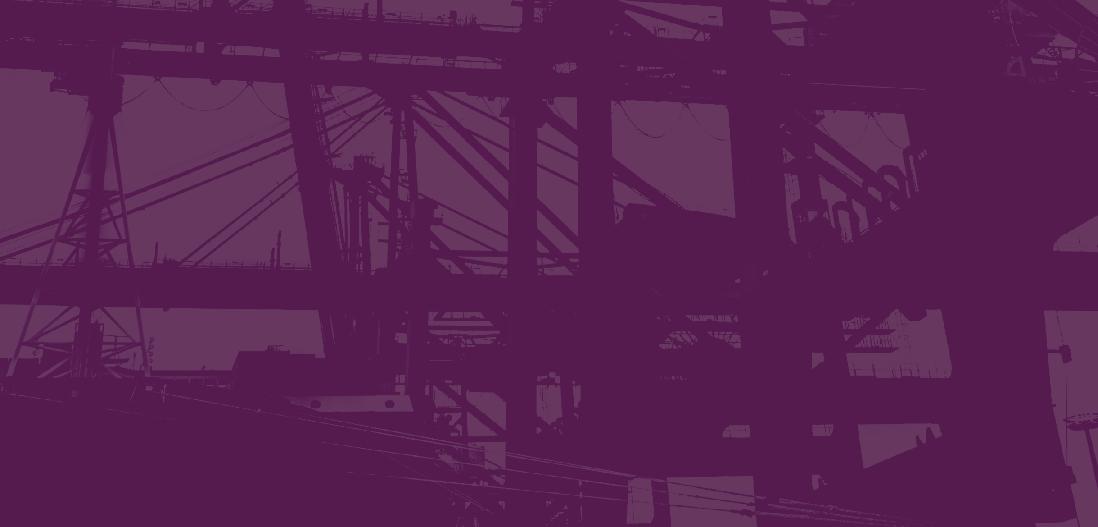
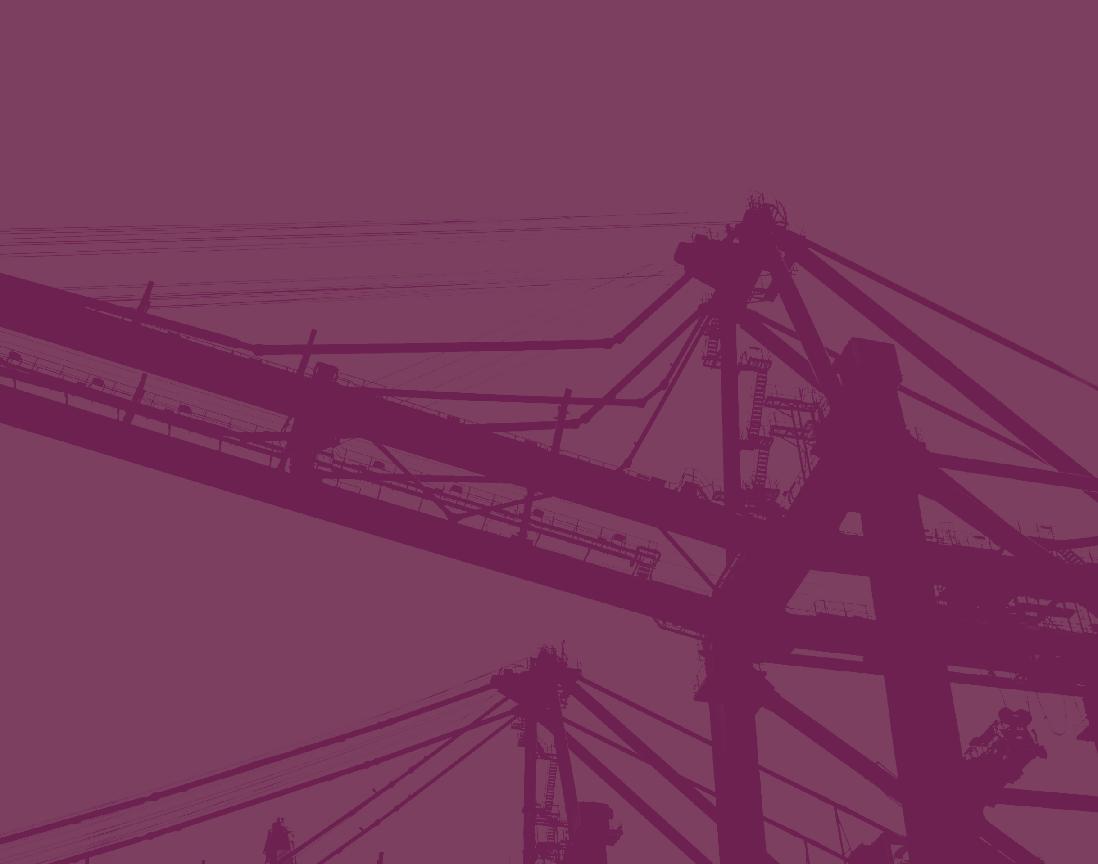
The refurbished installation has now witnessed it first vessel berthing on the safe side.
At the same time, expansion at Port La Romana in the Dominican Republic has seen ShibataFenderTeam at work upgrading and improving the safety of cruiseship accommodation by installing 11 new fenders.
at Law, along with the Tito Mella Foundation, under the Presidency of Vinicio Mella contributed valuable inputs to the document.
42 Caribbean Maritime | February-May 2023 News from around the Caribbean roundup Caribbean Maritime
Central La Romana
Lludelis Espinal
Florida


Jacksonville-based Blue Water Industries, a leading national bulk materials supplier, has entered into an agreement with Port Canaveral terminal operator Ambassador Services International (ASI) to import between 400,000 to 800,000 metric tonnes annually of varioussized aggregate. Scheduled deliveries of the products originating in eastern Canada will arrive at Port Canaveral monthly and distributed throughout Florida and the southeastern US.

Port Canaveral has a long history of handling a broad mix of bulk and breakbulk cargos, including aggregates, petroleum products, lumber and building materials, and other commodities. Cargo throughput numbers at the Port have been steadily increasing year over year, hitting new high volumes of tonnage in the last fiscal year (2022).
Colombia
The partner in Colombia of Dutch shipbuilder Damen, LINEAL Engineering, has opened a new office in Barranquilla. Since the company was founded five years ago it has been based in Bogotá, an ideal location for supporting its governmental and naval customers. The addition of an office in Barranquilla now enables it to provide an enhanced level of service to its private sector clients.
The Caribbean is an important market for the Damen Group. Recent collaborations include the signing of a contract in September by COTECMAR and Damen for the co-development of the contractual design for the next generation of frigates for the Colombian Navy. And previously, in 2019, the two groups agreed to collaborate on the design and build of a long range, 83-metre, scientific marine research vessel for the DIMAR maritime authority.
Working with LINEAL Engineering, Damen has good relationships with local shipyards and owners, offering a range of services that include not only support for new builds, maintenance and spare parts but also training, finance and other services that support vessels throughout their lives.


Puerto Rico
After standing almost idle for some years, could there be a change in the fortunes of the Port of Ponce?
Built and completed early this century and fitted since 2010 with two post-Panamax ship-to-shore gantries, the port has failed to become fully operational despite different attempts to make it happen. Back in 2017 (see CM issue 31), the Port of Singapore Authority (PSA) was hired in an attempt to revive the port and to market the facilities. But the PSA departed without really moving the dial.
In the interim, Ponce has enjoyed a few cruise calls and has handled some cargo. But little has changed.
Now at the start of 2023 there are hopeful signs that Ponce will finally blossom into a busy port using the expertise of new partners and new technology to attract global logistics companies to the south coast of Puerto Rico. Furthermore, two shipping lines are believed to be in negotiation with the Port of Ponce about establishing regular calls.
Jamaica
Jamaica has launched its candidature for Category C of the International Maritime Organization (IMO) Council, for the 2024-2025 biennium in London.
Corah-Ann Robertson-Sylvester, Board Chair of the Maritime Authority of Jamaica (and Past President of the Caribbean Shipping Association) hosted the launch of Jamaica's candidature to Category C of the IMO.
LINEAL Engineering also works with Damen’s Service Hub in Panama City (see separate Round up story).
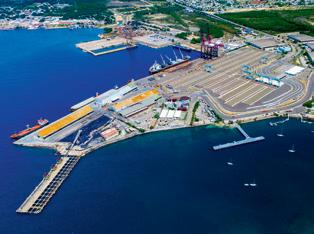
In another positive sign and after four years without any cruise activity in Ponce, Royal Caribbean's Voyager of the Seas ship arrived in January.
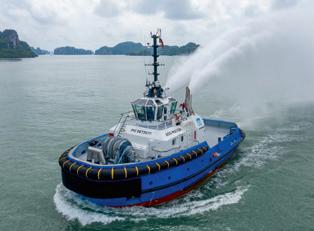
43 www.caribbean-maritime.com
Port Canaveral
Damen Shipyards Group
Port of Ponce
Florida
A recently awarded US$ 23.5 million federal grant is helping JAXPORT enhance sustainability by increasing the electrification of its main terminals.
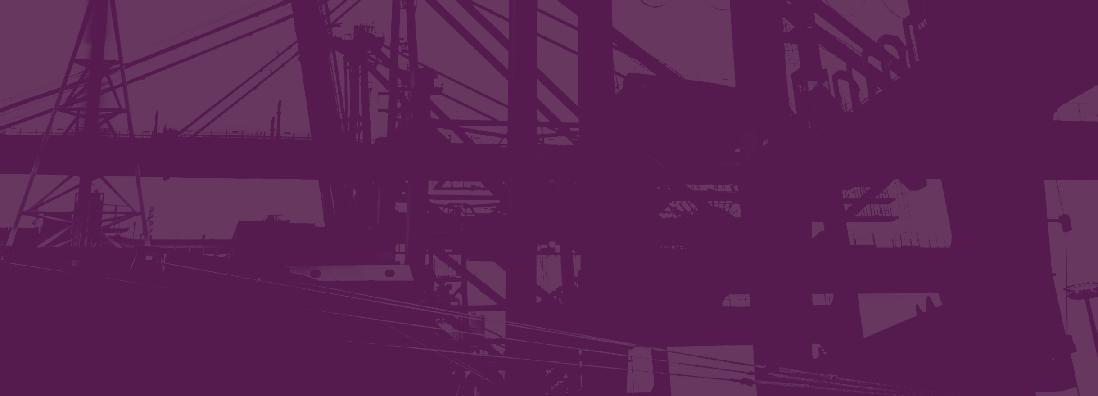
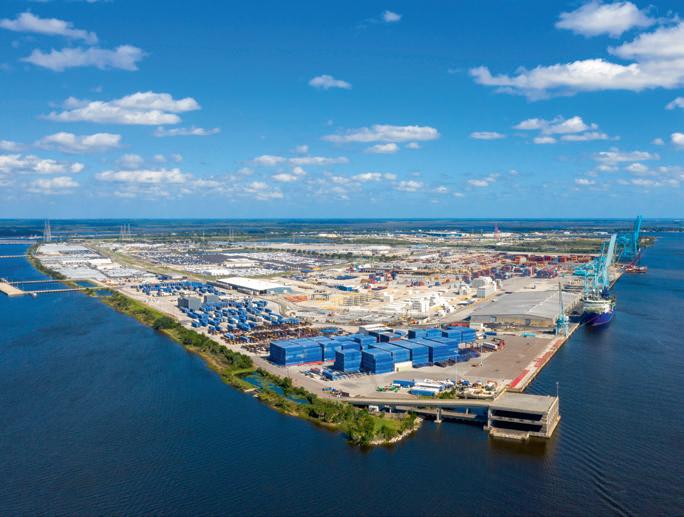
The JAXPORT EXPRESS project is a public-private partnership with port tenants Crowley and SSA Marine aimed at reducing emissions and diesel fuel usage. The scheme is also part of Crowley’s goal to achieve net-zero emissions by 2050.
"It's providing ways to partner across the industry that we have not attempted before − ways to partner with customers on new technologies and new skills," said Crowley’s Vice President of Sustainability Meaghan Atkinson.

As part of the EXPRESS project, US$ 47 million will be used to purchase new eco-friendly cargo handling equipment at the Talleyrand and Blount Island terminals.
Dominican Republic
Representatives of the Caribbean Shipping Association’s (CSA) General Council paid a courtesy visit to DP World Caucedo in the Dominican Republic in January as part of continued efforts to meaningfully engage its membership.
The CSA delegation included vicepresident William Brown; Group A chairman Eduardo Pagán; Group C chairman JC Barona; and general
JAMAICA
German Ship Repair Jamaica (GSRJ), in association with Sagicor Group Jamaica, launched in January a new ship repair facility in St Andrew Parish.
The first phase of the US$ 37 million project will comprise a floating dock plus steel fabrication yard and is part financed by the local Sagicor Bank. The yard is set to be fully operational by the end of 2023.
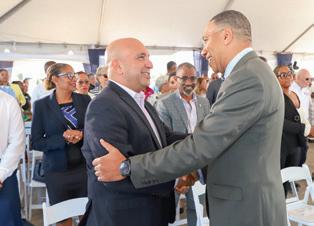
The idea for such a yard dates back several years (see CM issue 30).
manager Milaika Capella-Ras.
As part of the official visit, the group were given a tour of the port’s facilities – to see the terminal expansion and new state-of-the-art industrial and logistics park – by operations manager Ramon Badia.
Later, the delegation was treated to a presentation at the DP World offices in Caucedo where they were
briefed on the terminal’s future, and upcoming developments which will positively impact the local and regional logistics environment.
Additionally, with the CSA focused on offering improved training opportunities for its members in the short-term, the group explored ways to partner with DP World in extending its expertise to the Association.
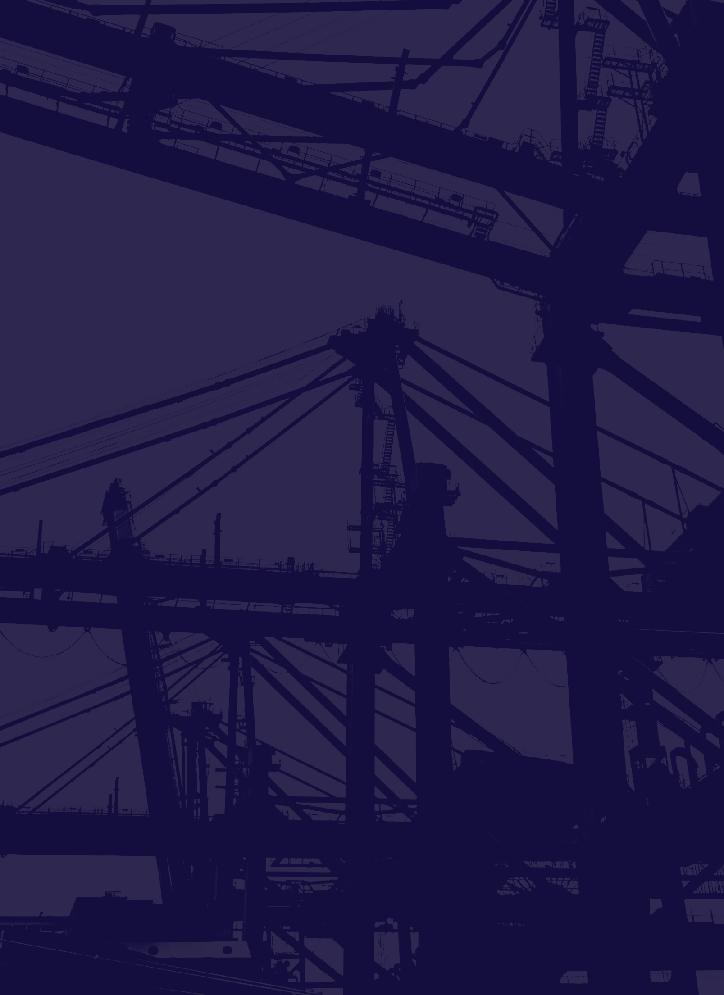
44 Caribbean Maritime | February-May 2023 News from around the Caribbean roundup Caribbean Maritime
Port of Jacksonville
